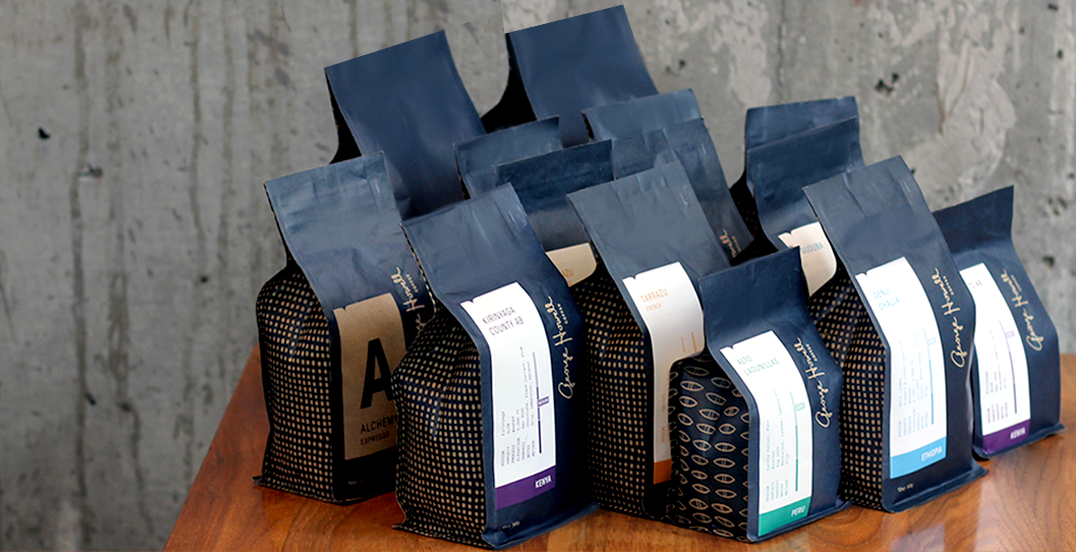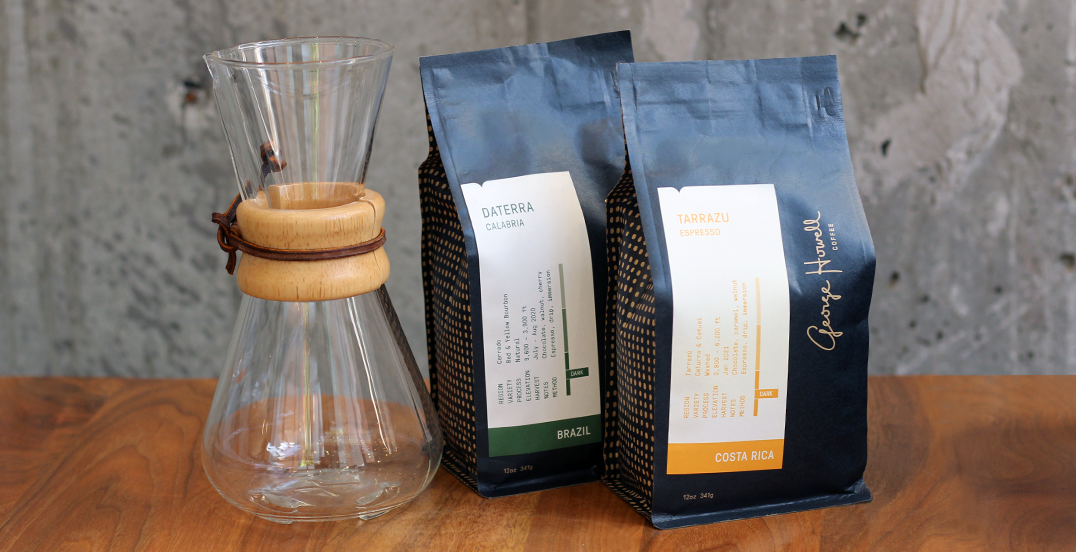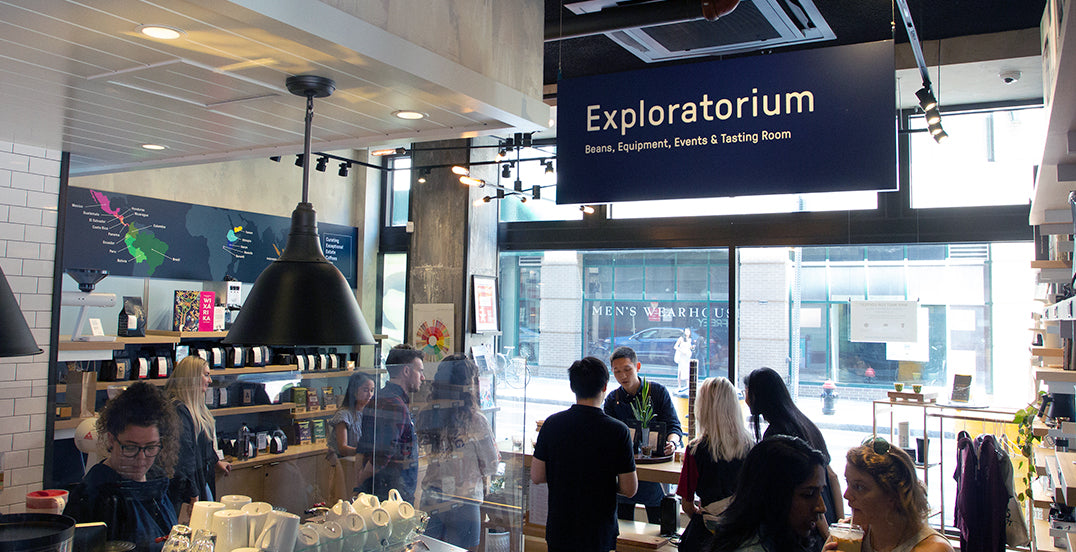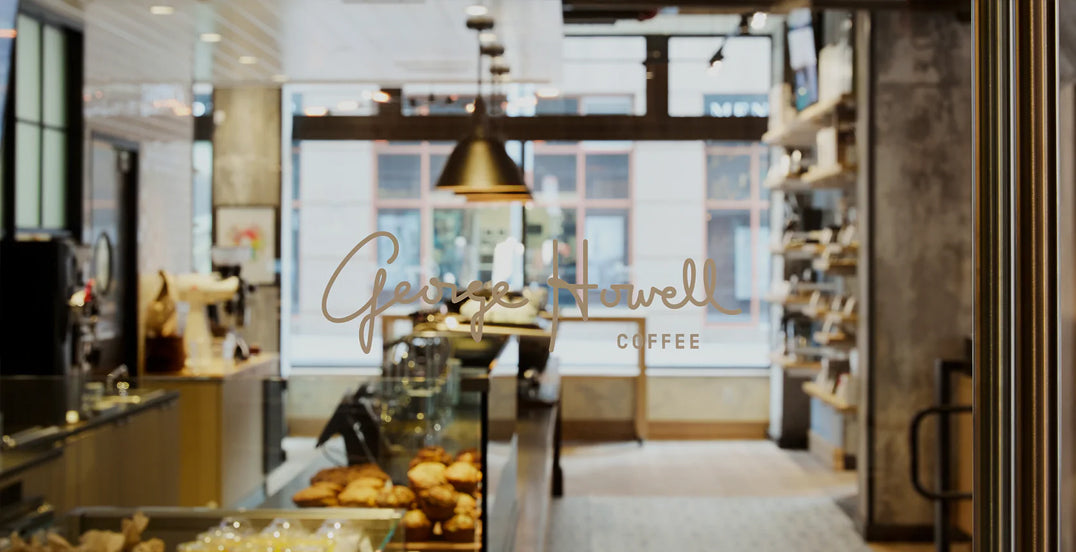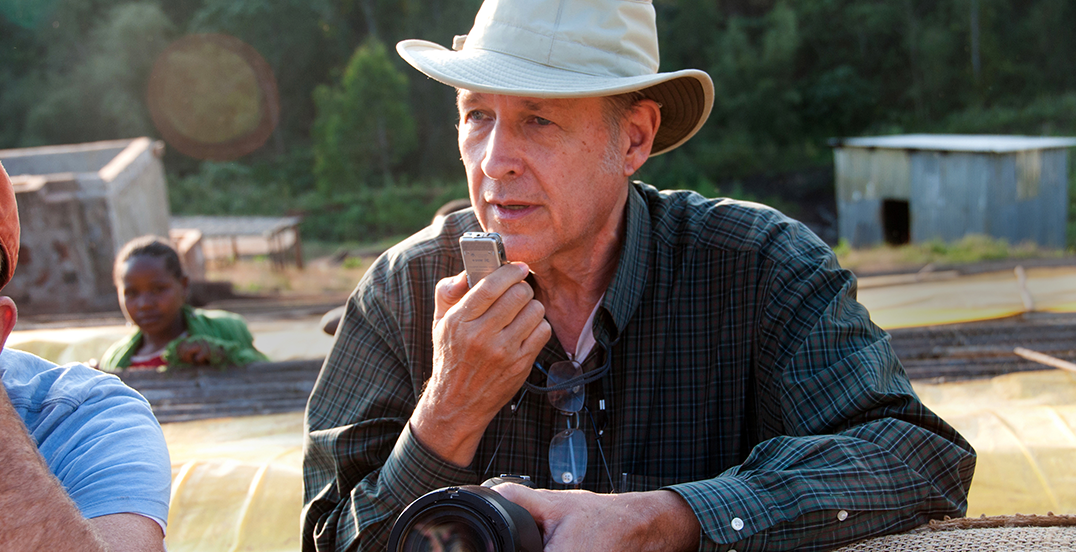Oaxaca has become a destination for not only tourists, but also for quality coffee roasters seeking heirloom coffee varieties.
Pictured here is local art which we found on a door near our hotel. It's by local artist @r.valerdi
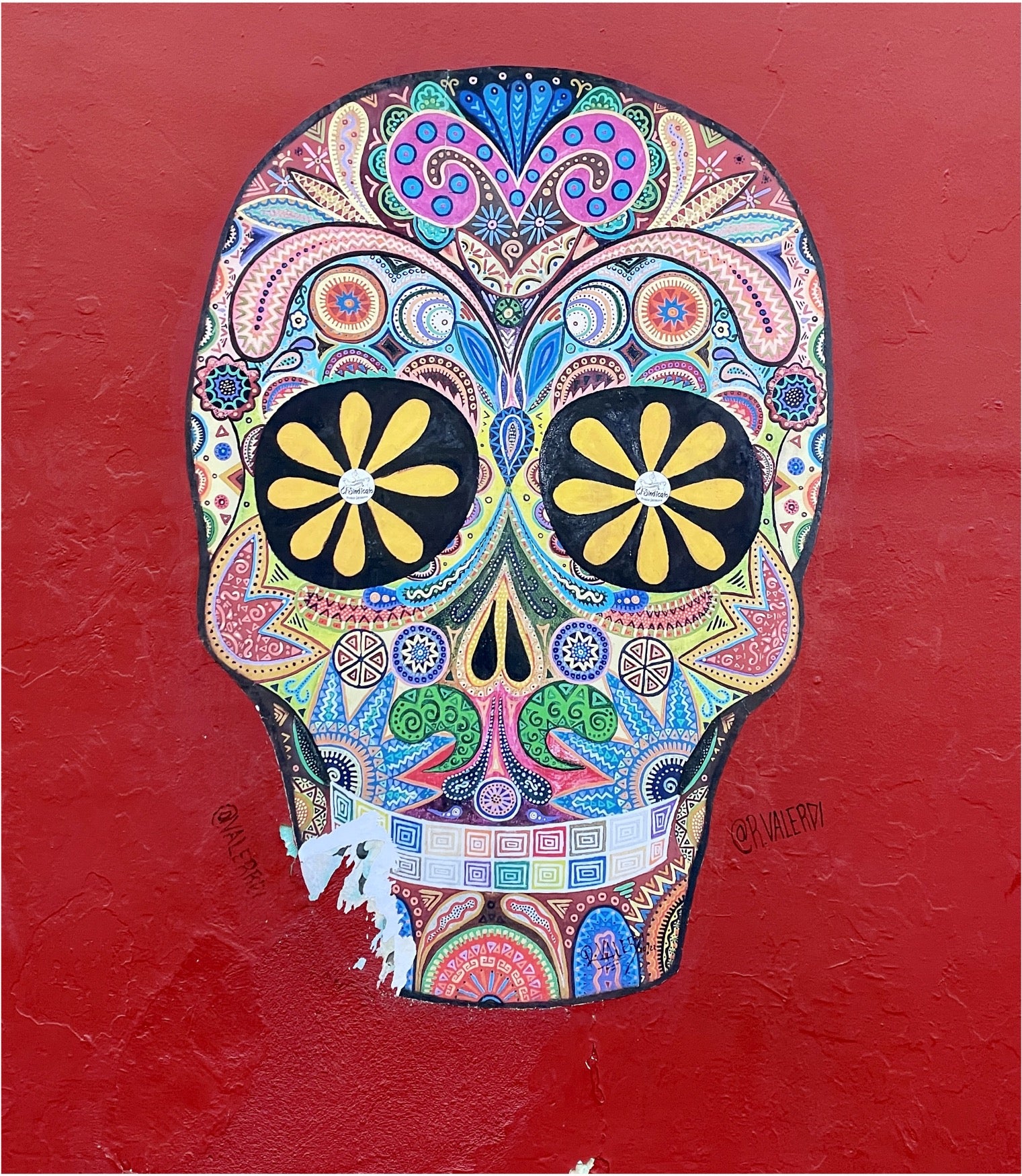
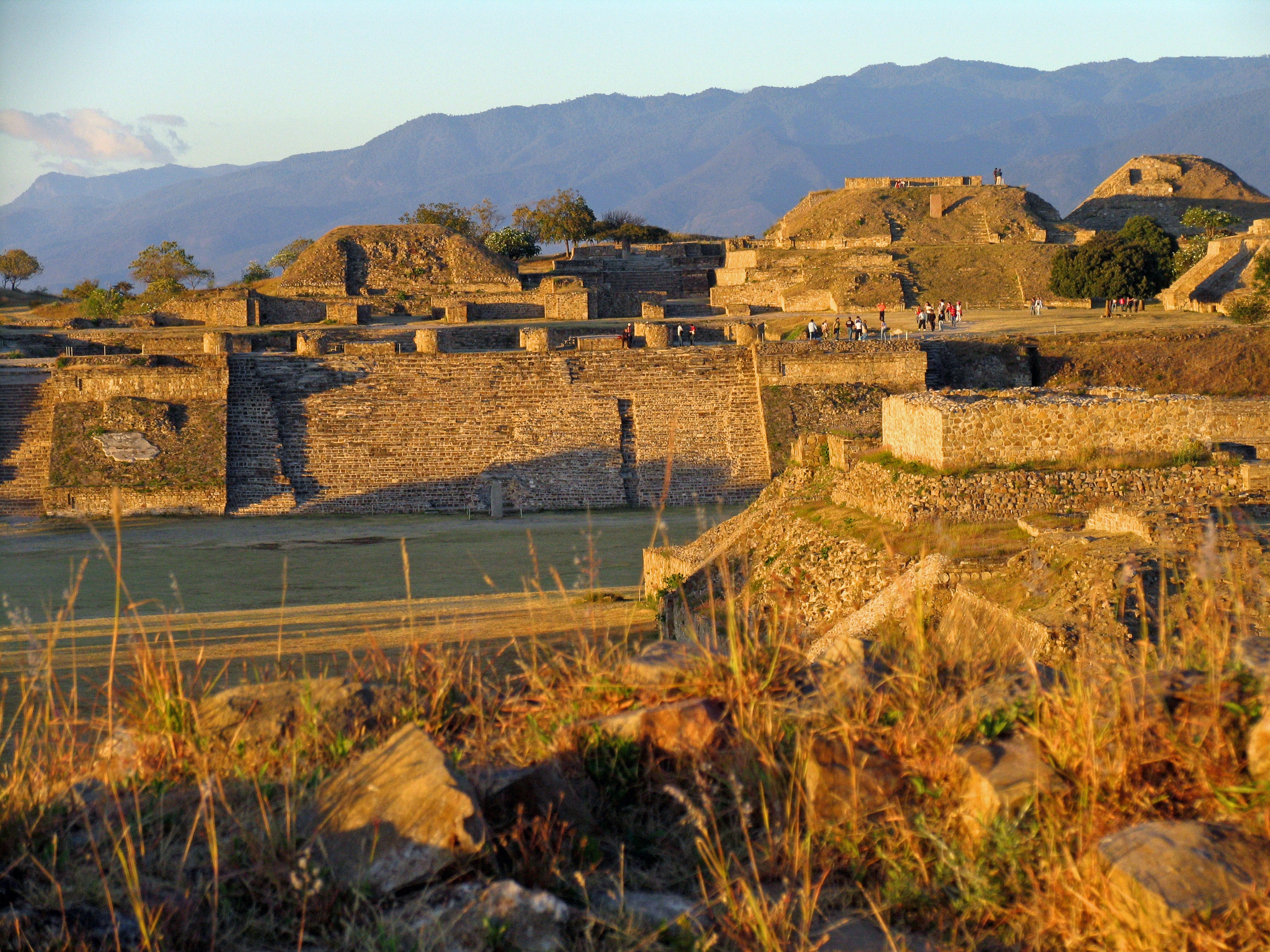
The Zapotec ruins of Monte Alban (500 BC – 750 AD) stand on a hilltop above the valley of Oaxaca.
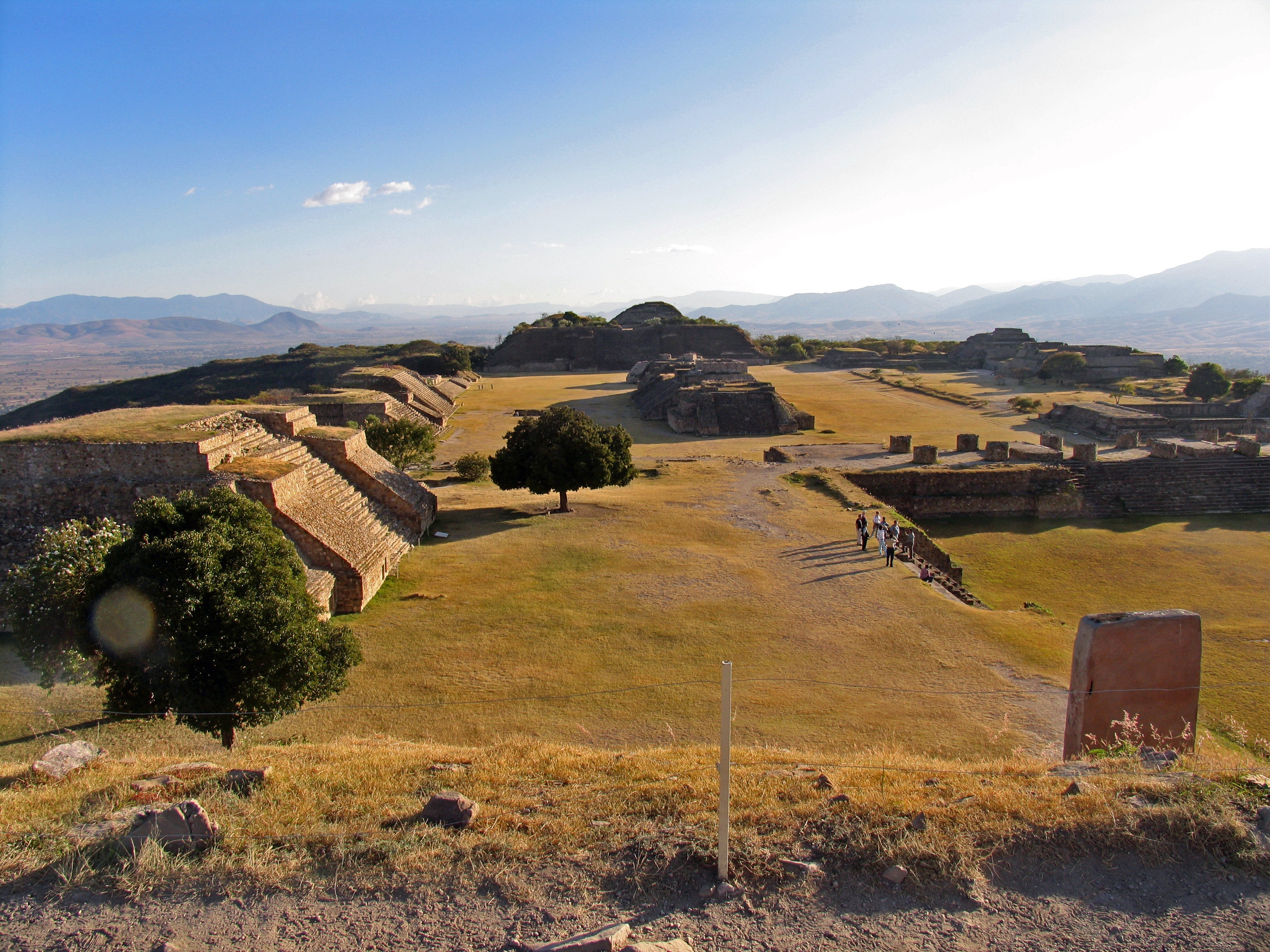
Below Monte Alban lies the city of Oaxaca, founded in the early sixteenth century.

The city of Oaxaca. A large percentage of Oaxaca state’s population is indigenous. It is a place where the ancient world meets the modern.

Oaxaca city has exploded as a culinary, cultural, artistic, and political center of Mexico. Art is everywhere.

The central park in the city center is lined with outdoor bistros, musicians and colorful bric-a-brac.

The central plaza is a gathering place for events, festivities and political demonstrations.
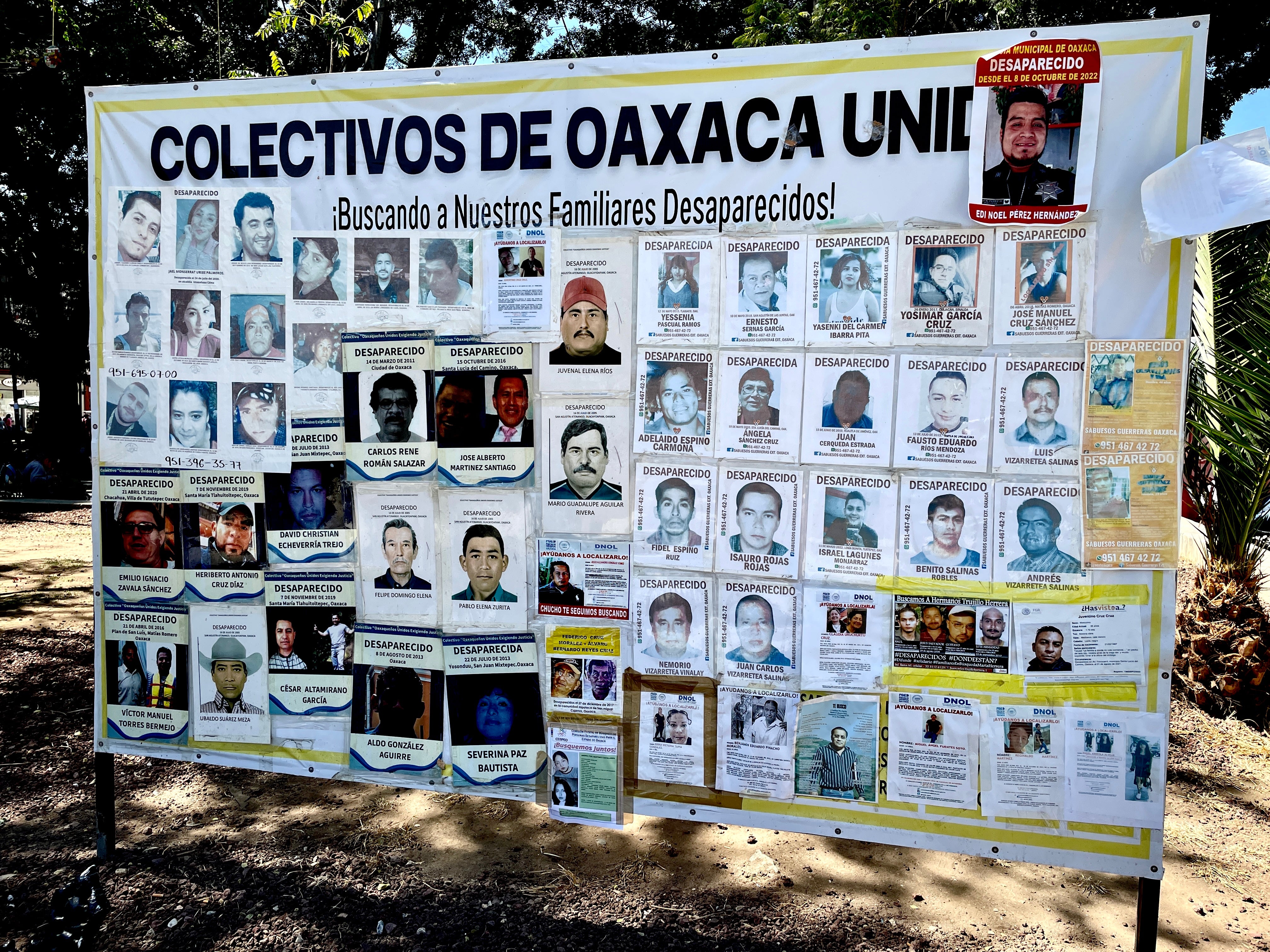
Among the bright culture of the city there is a stark reminder of the reality for some, a board featuring disappeared community members.
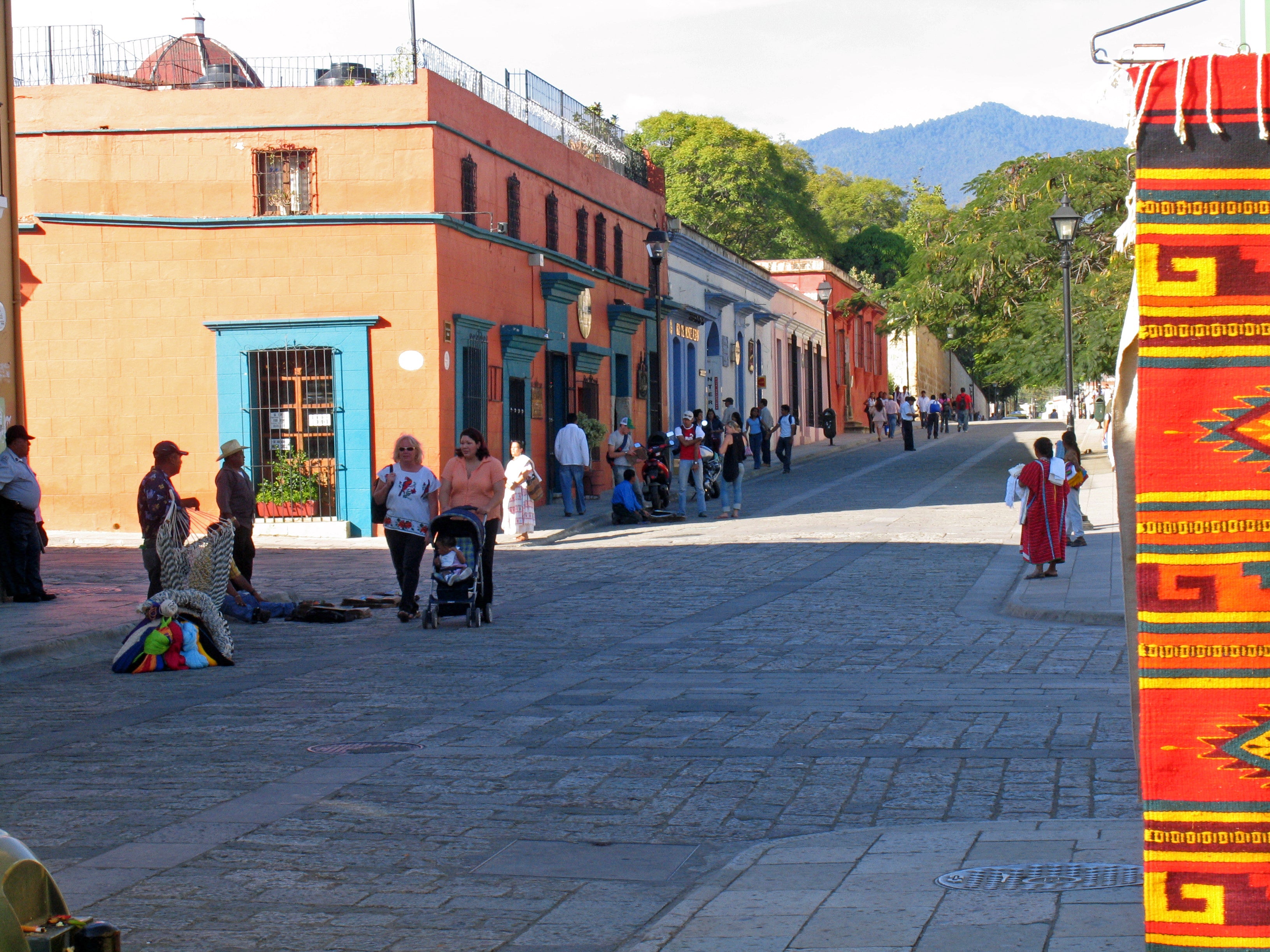
In the last two decades, change has come quickly. This photo was taken ten years ago. The street corner was already busy with many tourists, mostly Mexican. But like the liveliness of the city, tourism in Oaxaca has grown.

The same corner pictured above is now occupied by the powerful presence of these life-size sculptures.
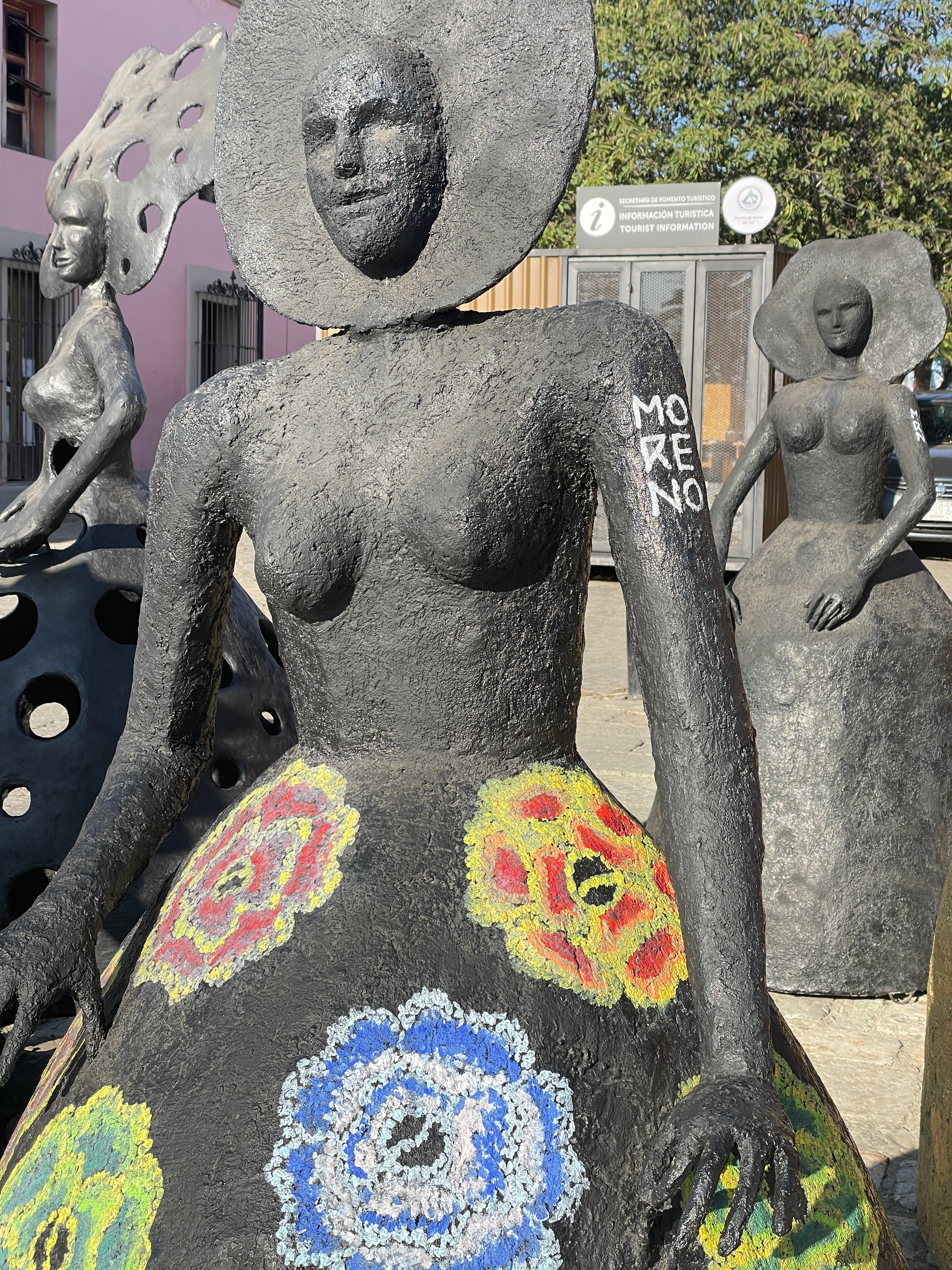
More sculptures - a reflection of the exploding art scene in Oaxaca that brings people from near and far.
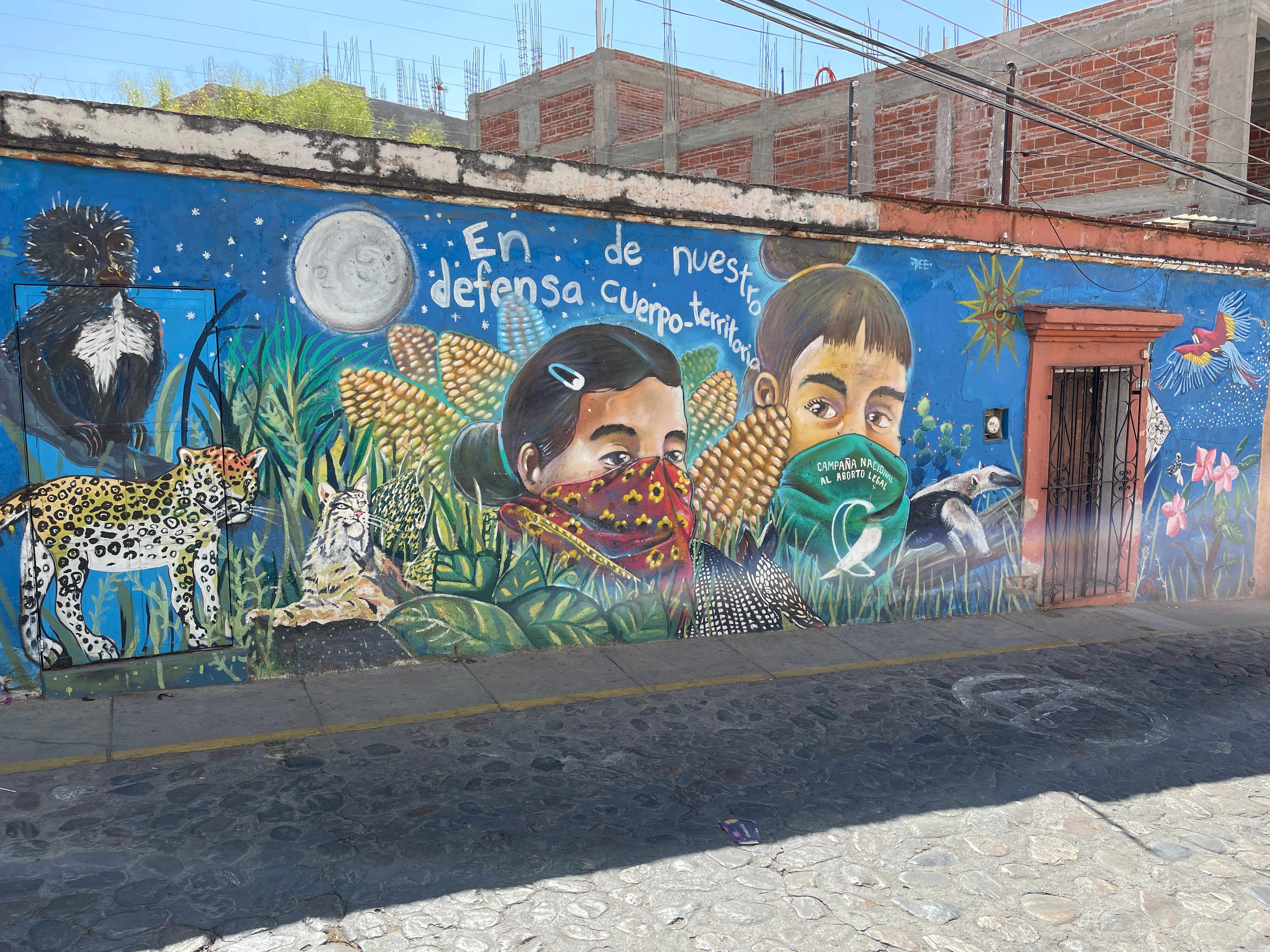
Local street art representing the National Campaign for Legal Abortion and the defense of one's body territory.
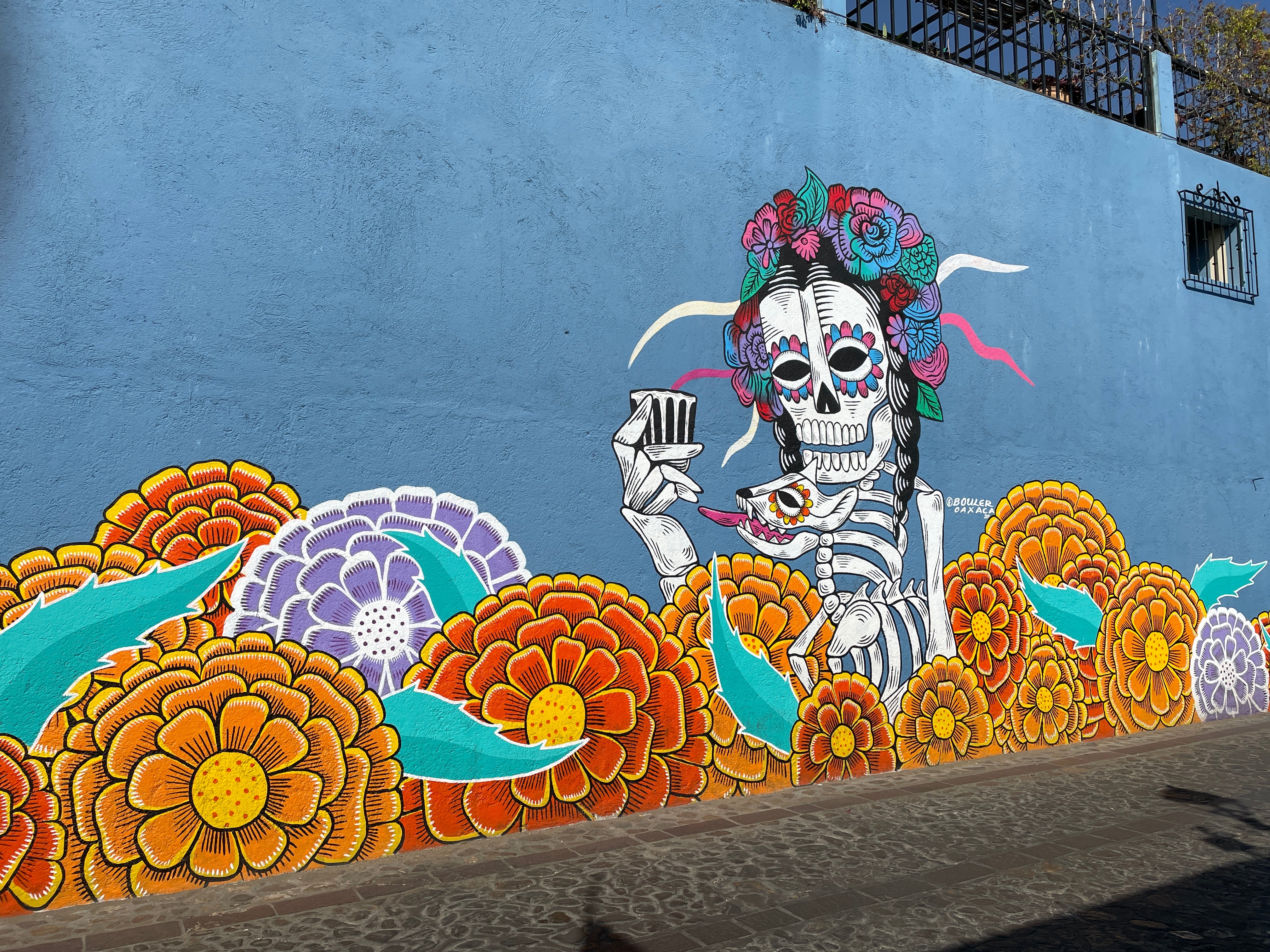
Another mural in Oaxaca. This is by artist @bouleroaxaca and it celebrates the Mexican tradition of The Day of the Dead.
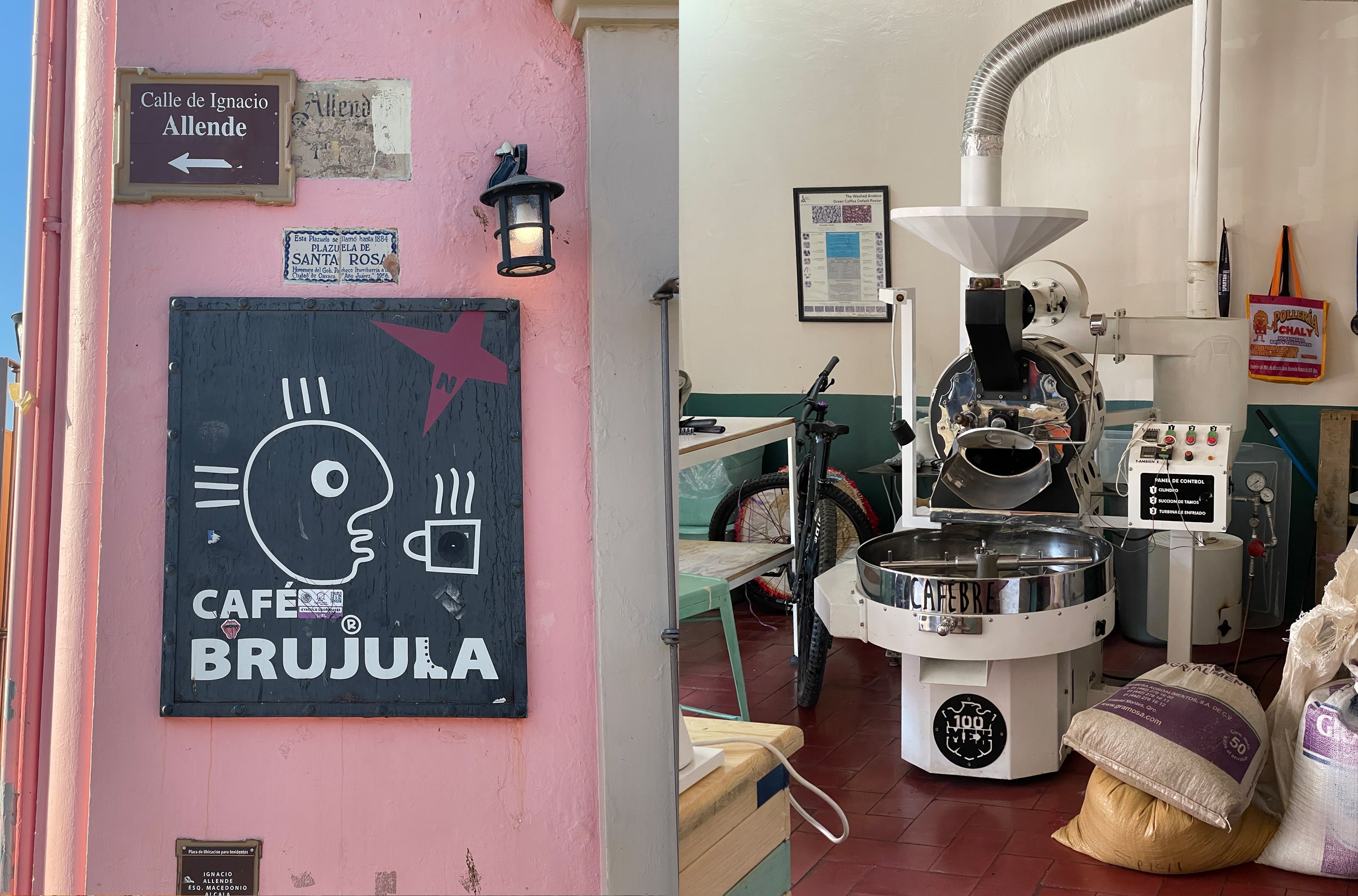
Cafe Brujula Oaxaca City.
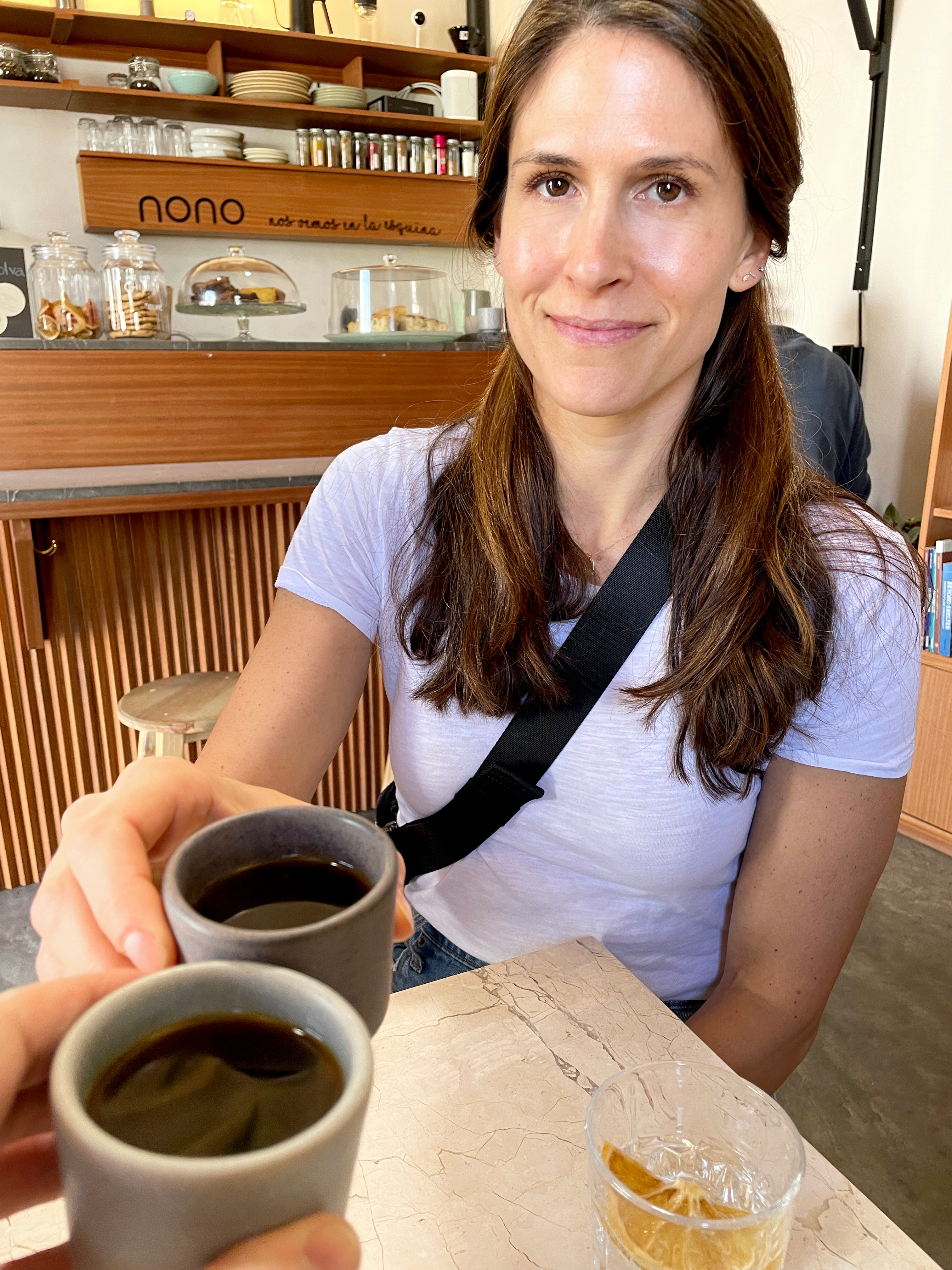
George and Jenny loved the Oaxacan coffee.

A plate of the different tomatoes grown in Oaxaca, a dish we'd love to enjoy again!
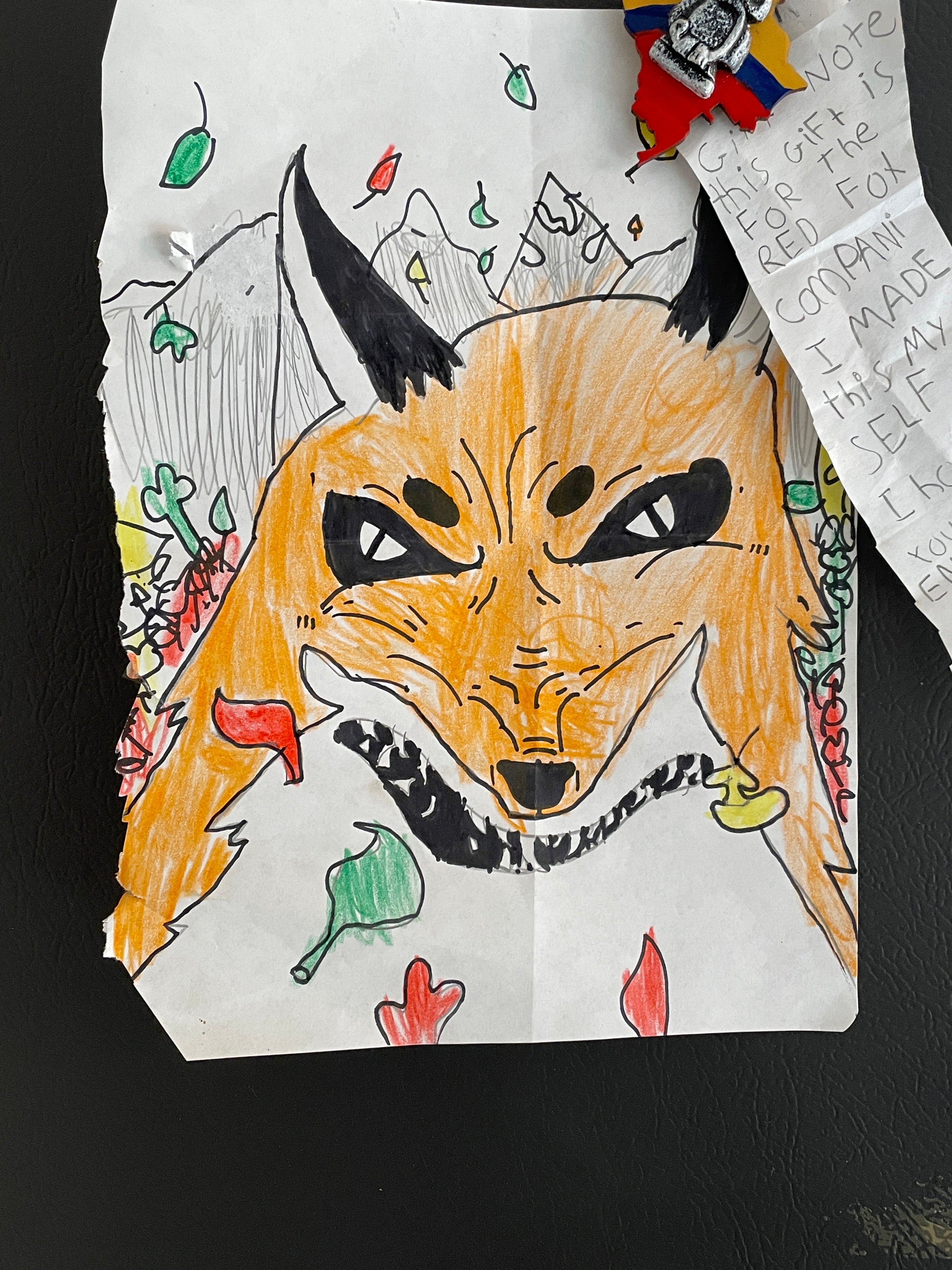
We arrived at Red Fox, located in Oaxaca City.
Our Yosotatu and Miramar Oaxacan coffees come to us via Red Fox Coffee, a green coffee importing firm deeply committed to quality. We were there to meet Red Fox’s representative in Mexico: Adam McClellan.
This drawing was done by Adam's eight year old son and is proudly displayed at the Red Fox office.

Adam McClellan
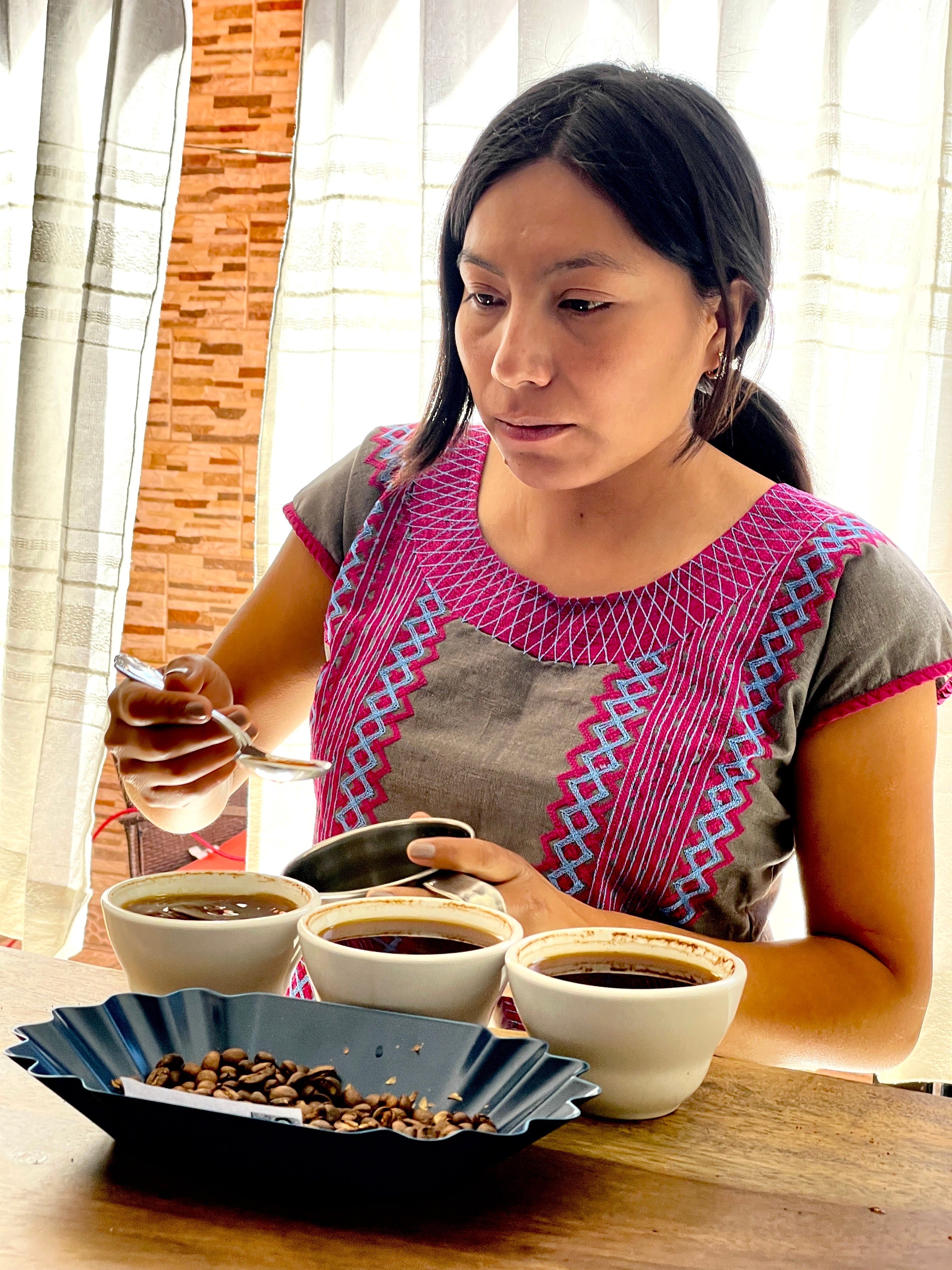
Maria Flores is a key coffee cupper for Red Fox in Mexico as well as Peru. She assesses every lot of coffee being considered for purchase.
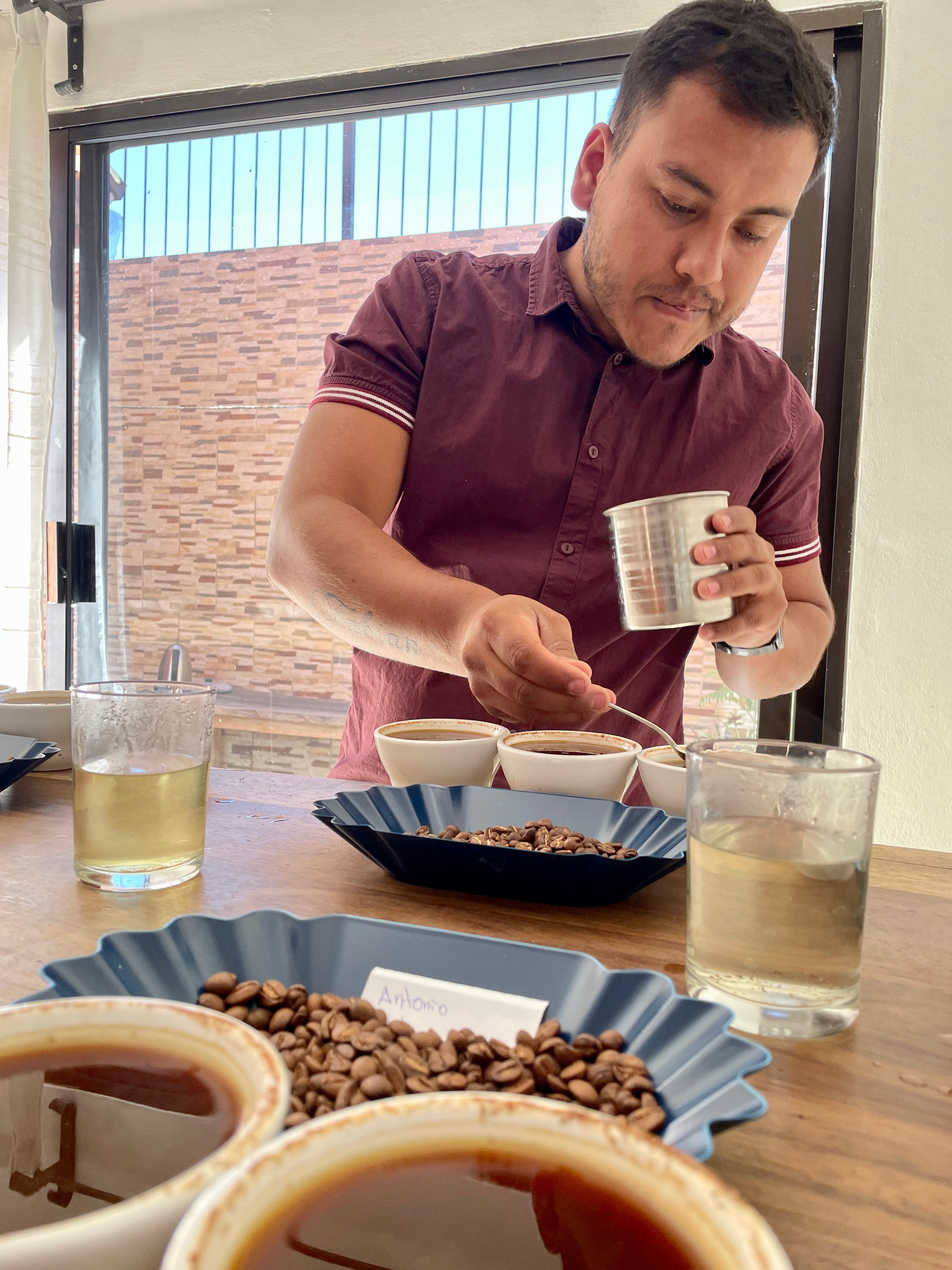
Fabian Viveros is the key spokesperson for the Red Fox team. He joins our visits to the farms we buy from in Mexico.

Trinidad Vasquez (Miramar farmer) & Diego Zarate, Red Fox agronomist

Nearing our destination…..

Arrived at Yosotatu!
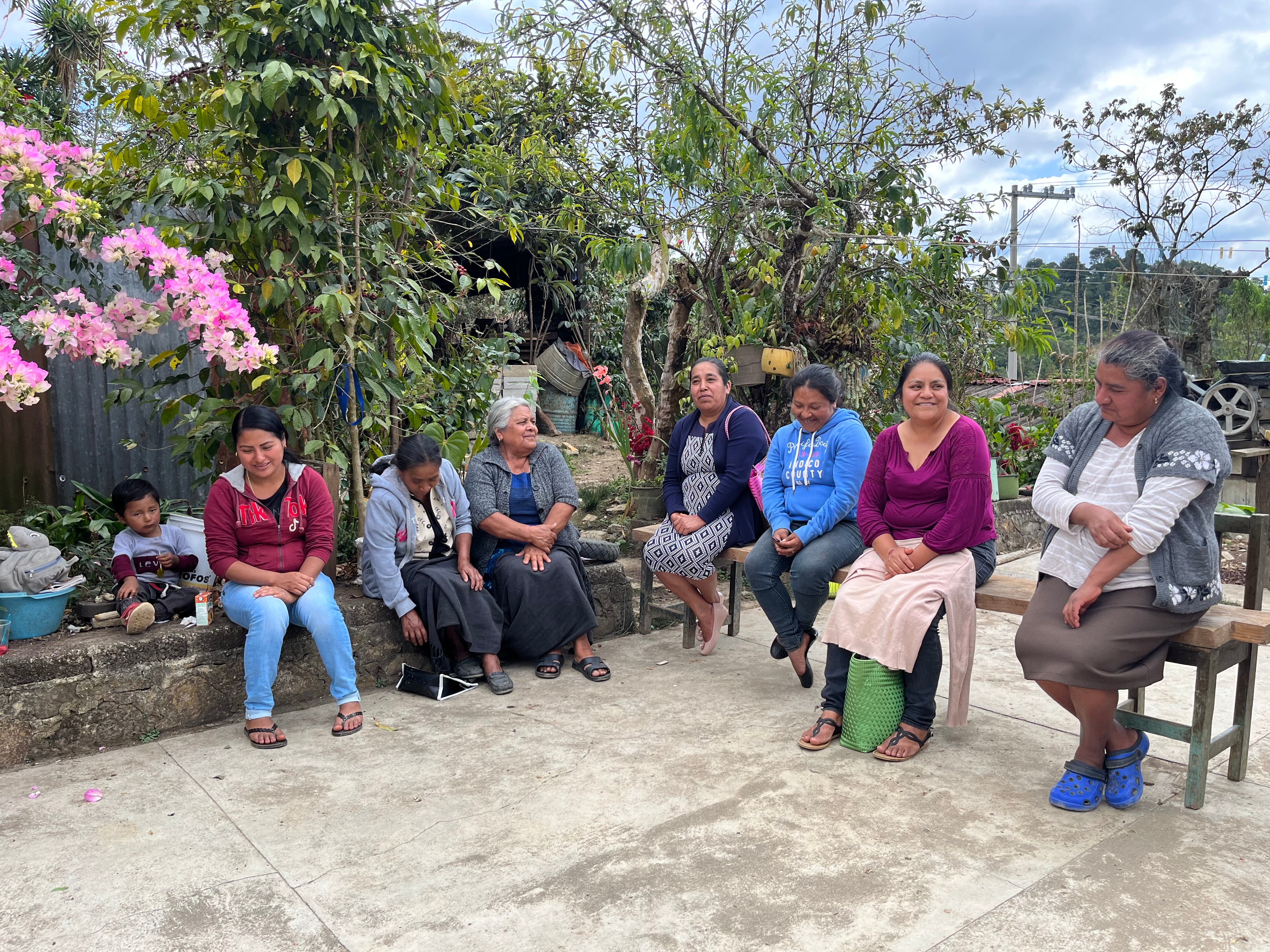
A small group of 20–30 farmers, mostly women, led by Madelina Lopez, organized to improve the quality of their coffee in exchange for higher premiums. They await discussions to begin with Red
Fox regarding the new harvest, farmer concerns, and prices.
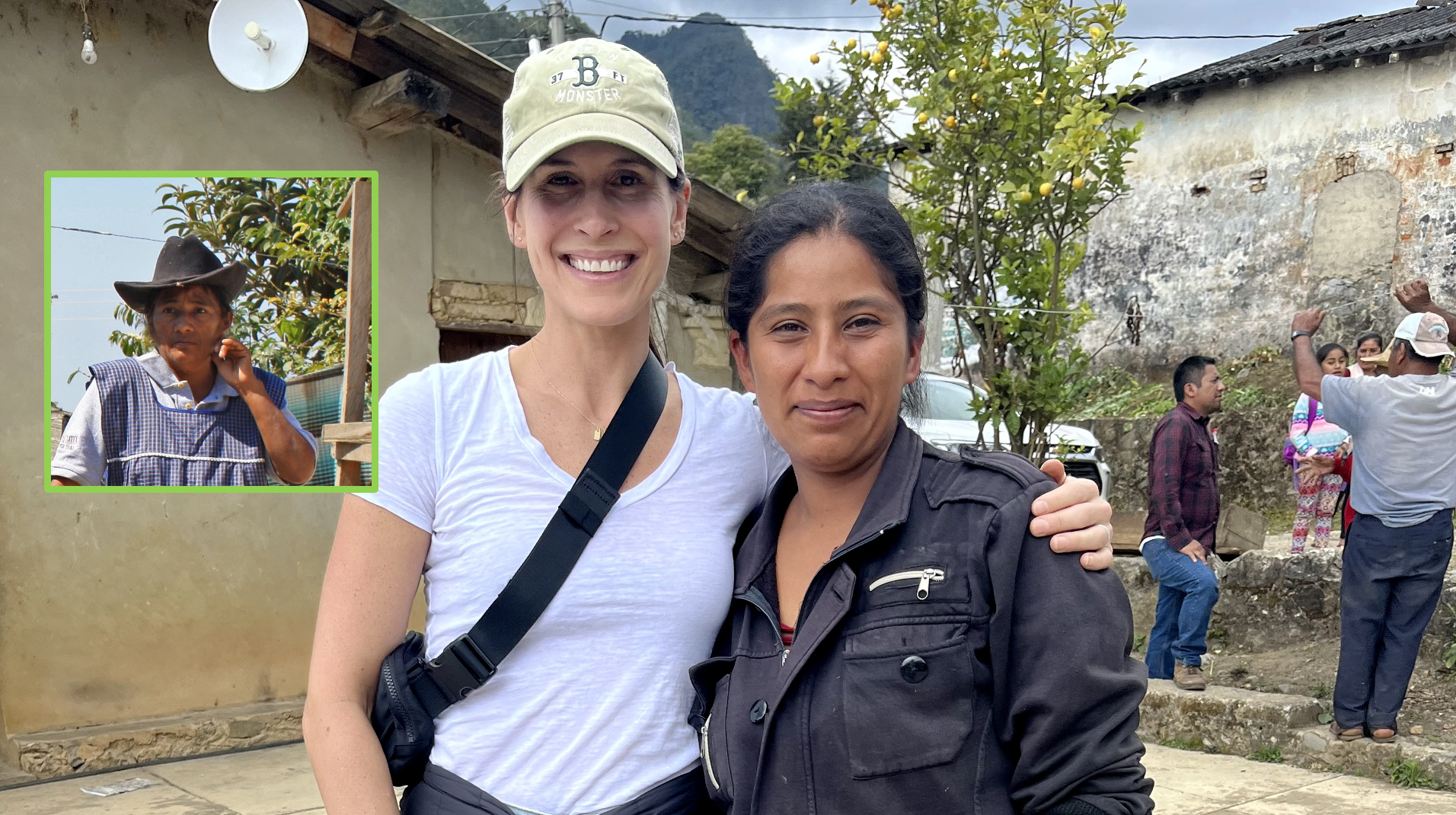
Jennifer with Madelina’s daughter Citlali. Madelina could not attend as she was dealing with medical issues which have since resolved.
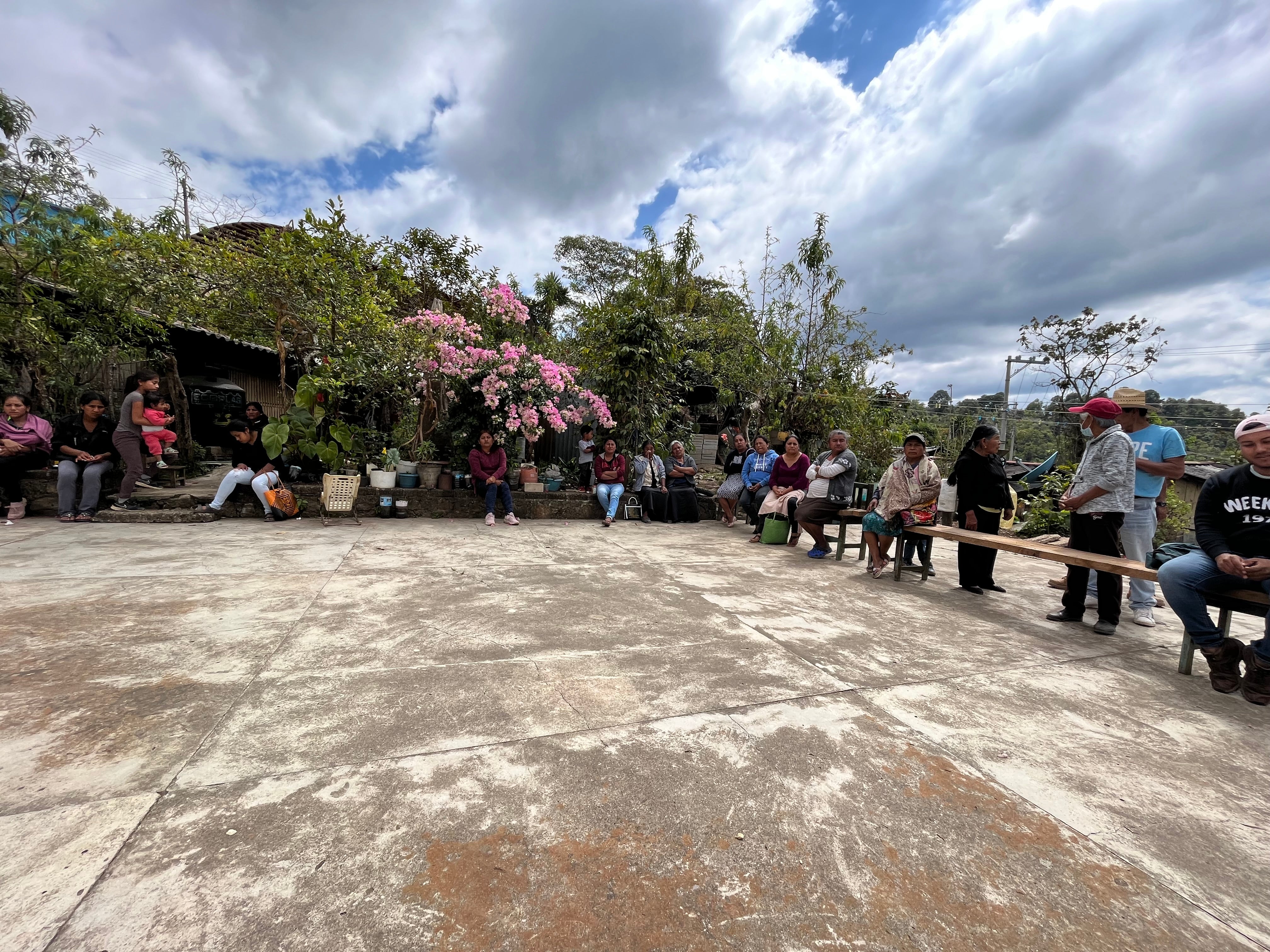
The patio, used for drying coffee beans after washing, served as the forum for the discussion.
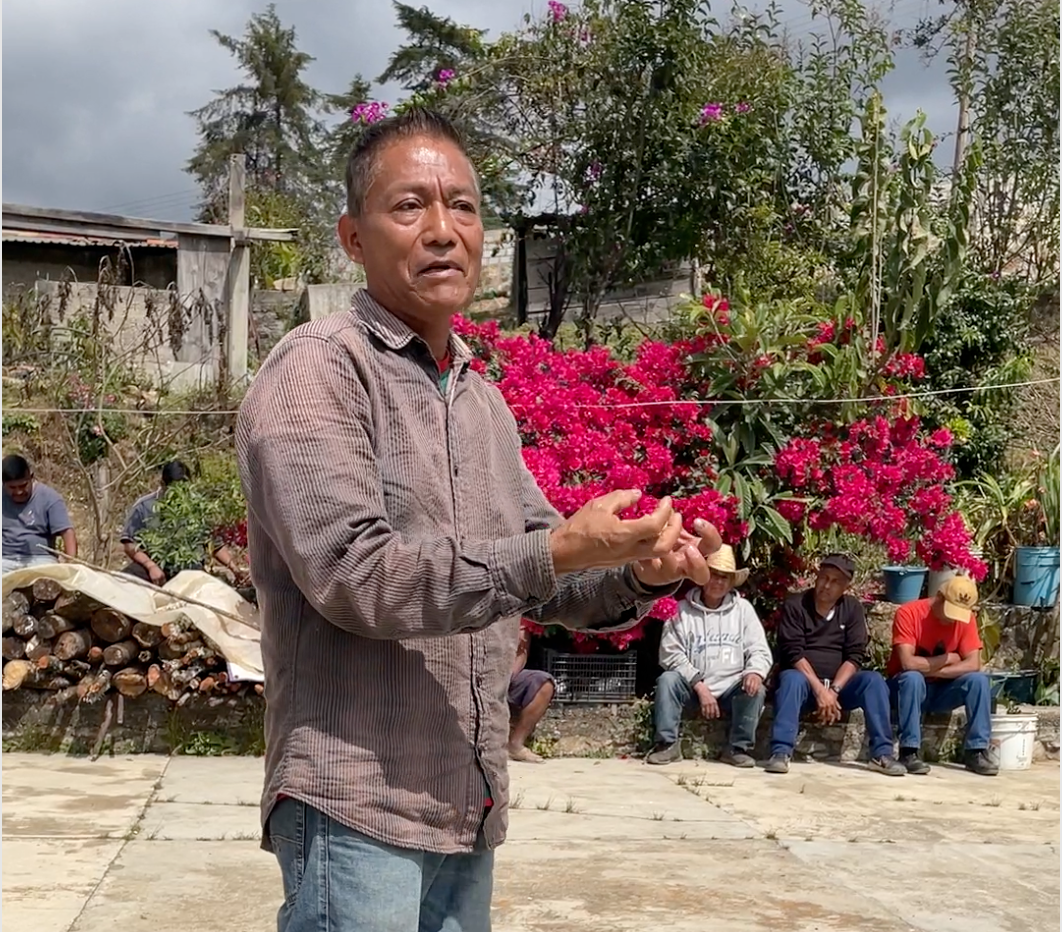
Amado Castro spoke on behalf of the Yosotatu farmers. He said that Red Fox has been the highest payer for their coffee for the past few years. They have come again to buy coffee. He reported that Red Fox thinks their coffee is among the best in Mexico which raised their spirits. They continue to need to work with great effort to produce high quality.
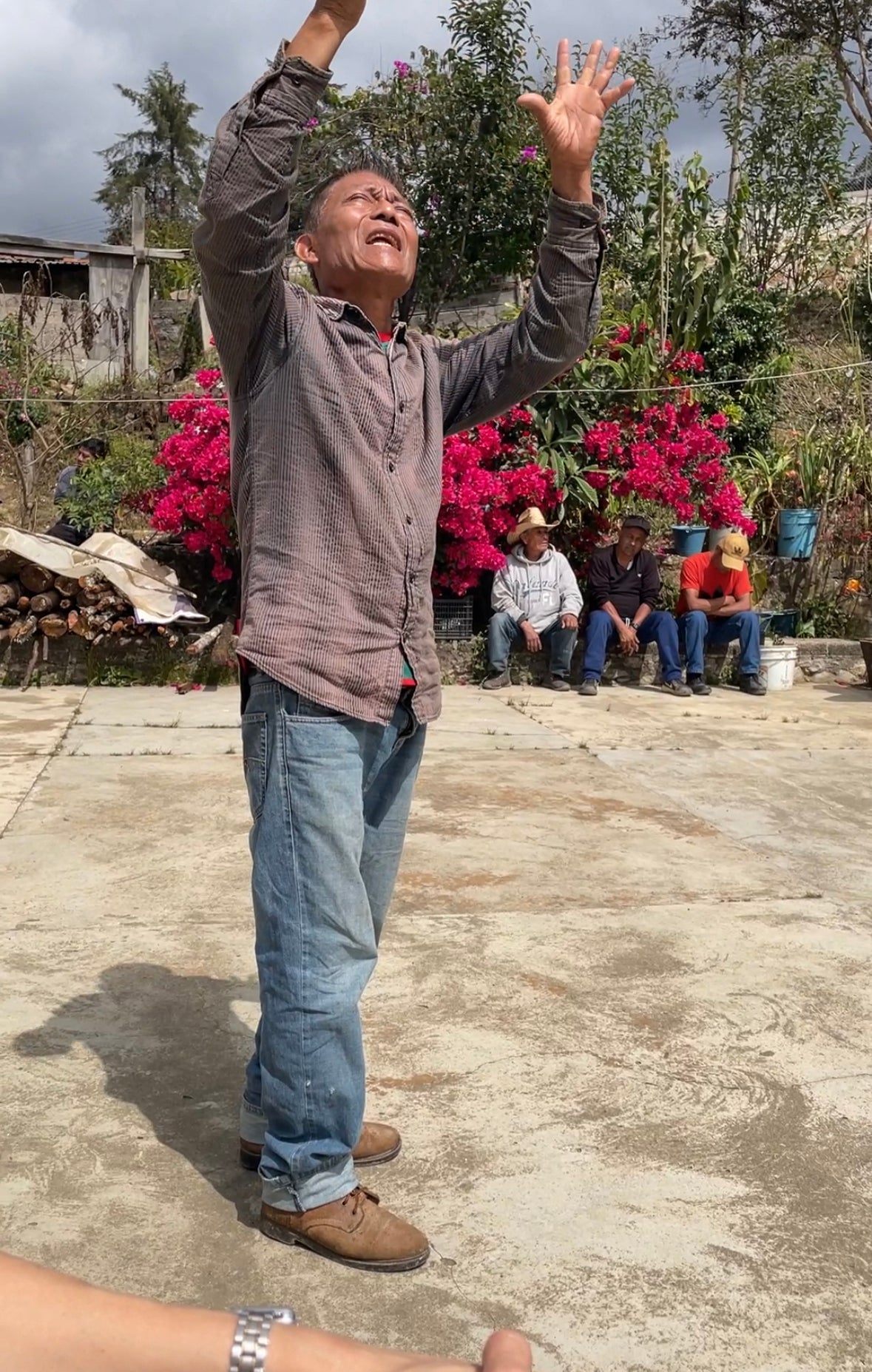
Amado explained to us that not every farmer could join the discussion. The sky unleashed heavy rains on lower areas. Farmers rushed to pick coffee cherries before they were ruined.
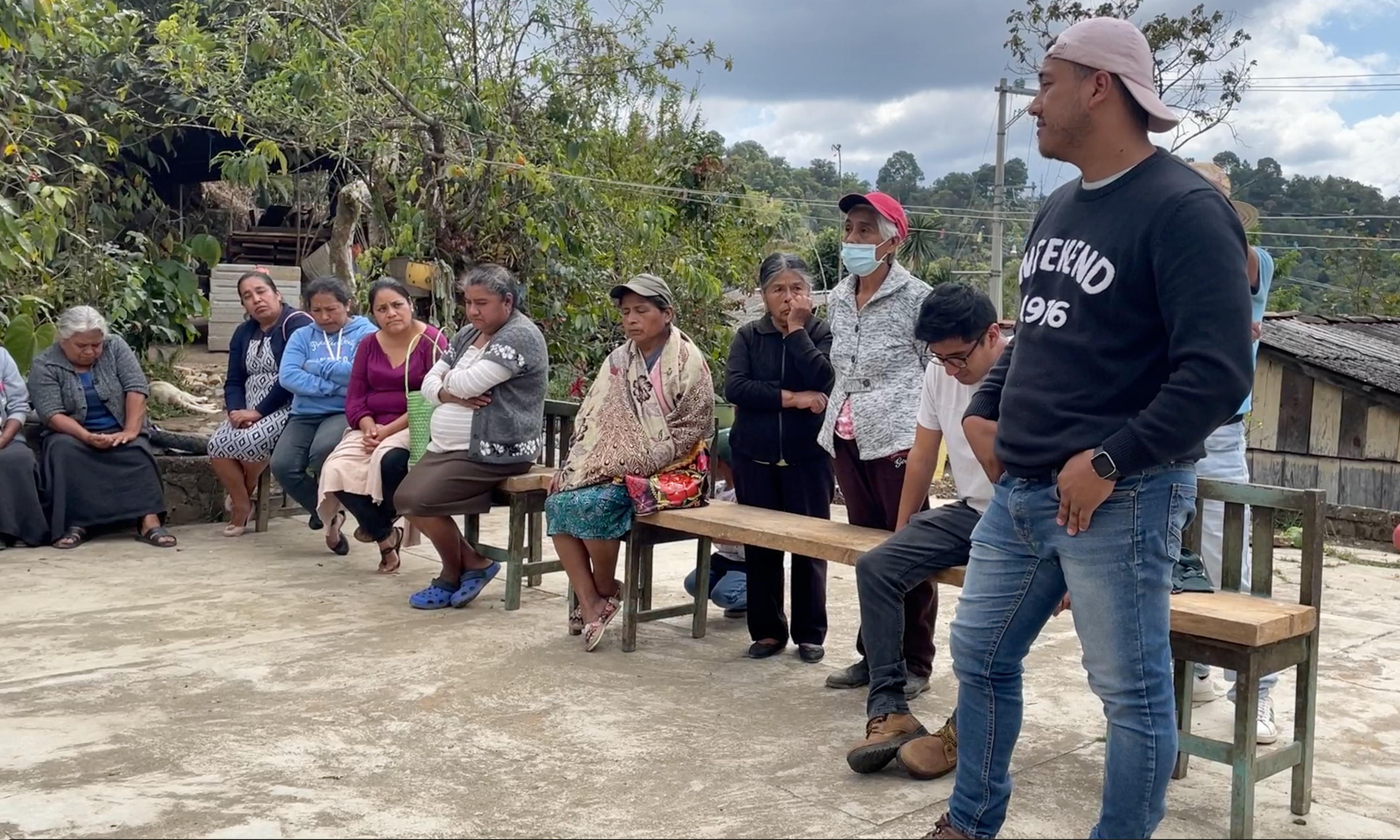
Fabian Viveros (Red Fox) replies to farmers regarding the demonstrated solidity of their commitment and continuing improvement of payment procedures as their new relationship finds its footing in working within the complexities of Mexican laws.
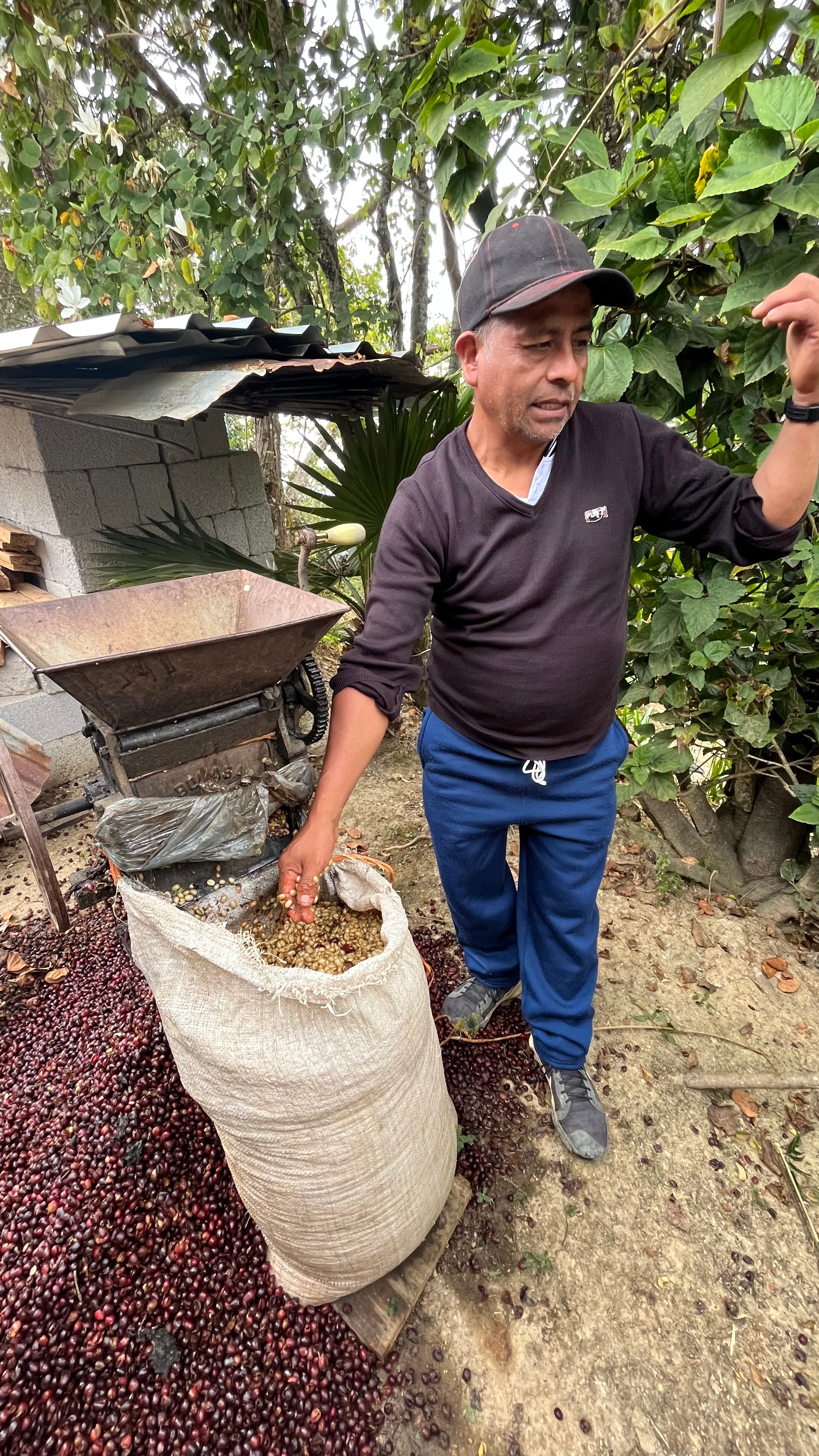
After the meeting, we see how they process their harvest. The cherries are depulped by hand. The depulper is to the left of processor’s arm. The spent dark “cherries” (mostly skins) are piled on the ground. They will be used for compost. The beans, still covered with sticky mucilage, are in the white bag.
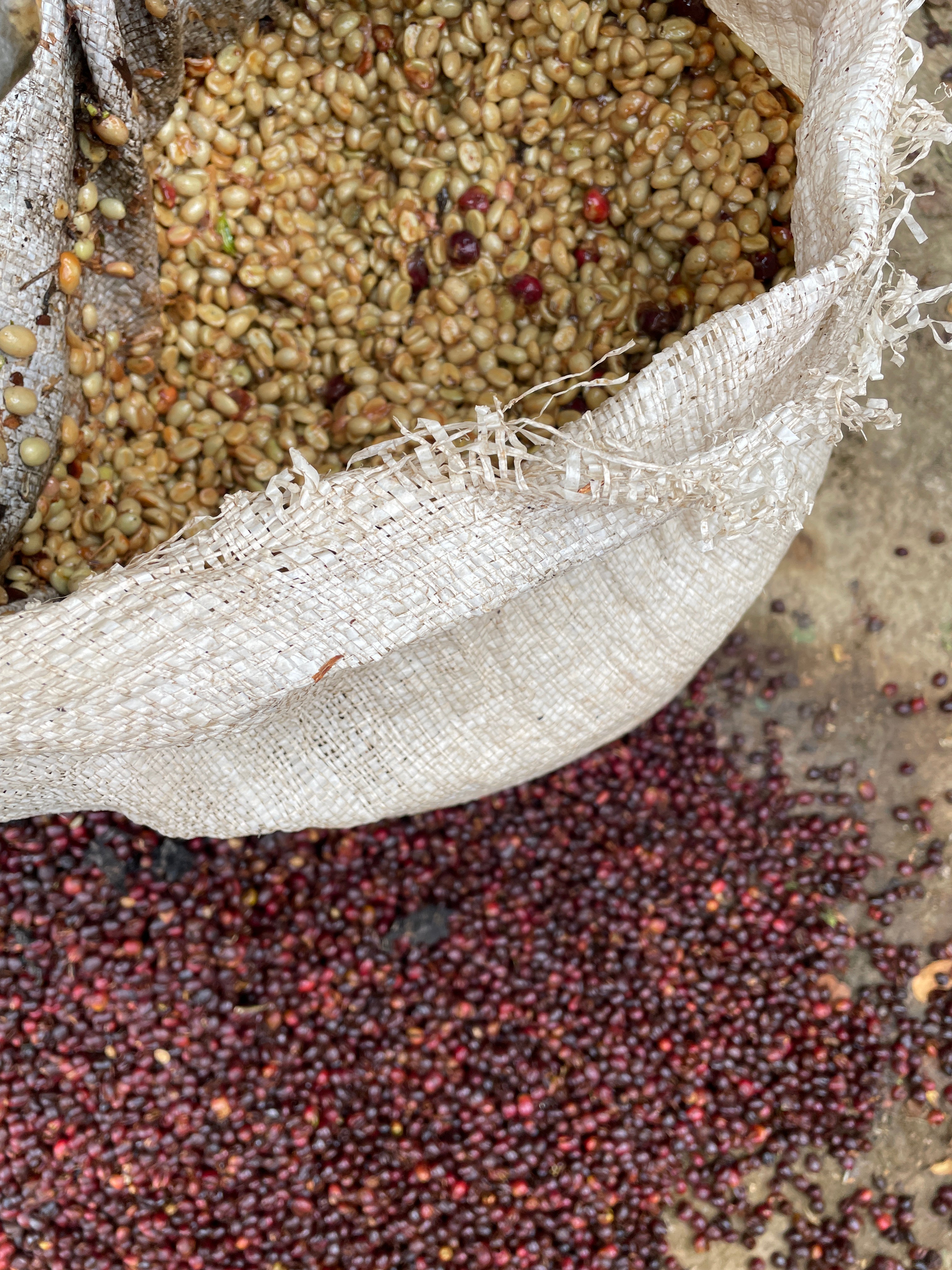
The beans are ready to be fermented, which will allow washing off the sticky mucilage that surrounds the beans. Fermenting coffee is not the same as for wine or bread. It is simply the process used to rot the fruit until turbulent water will wash it all away, all without damaging the beans’ flavors.
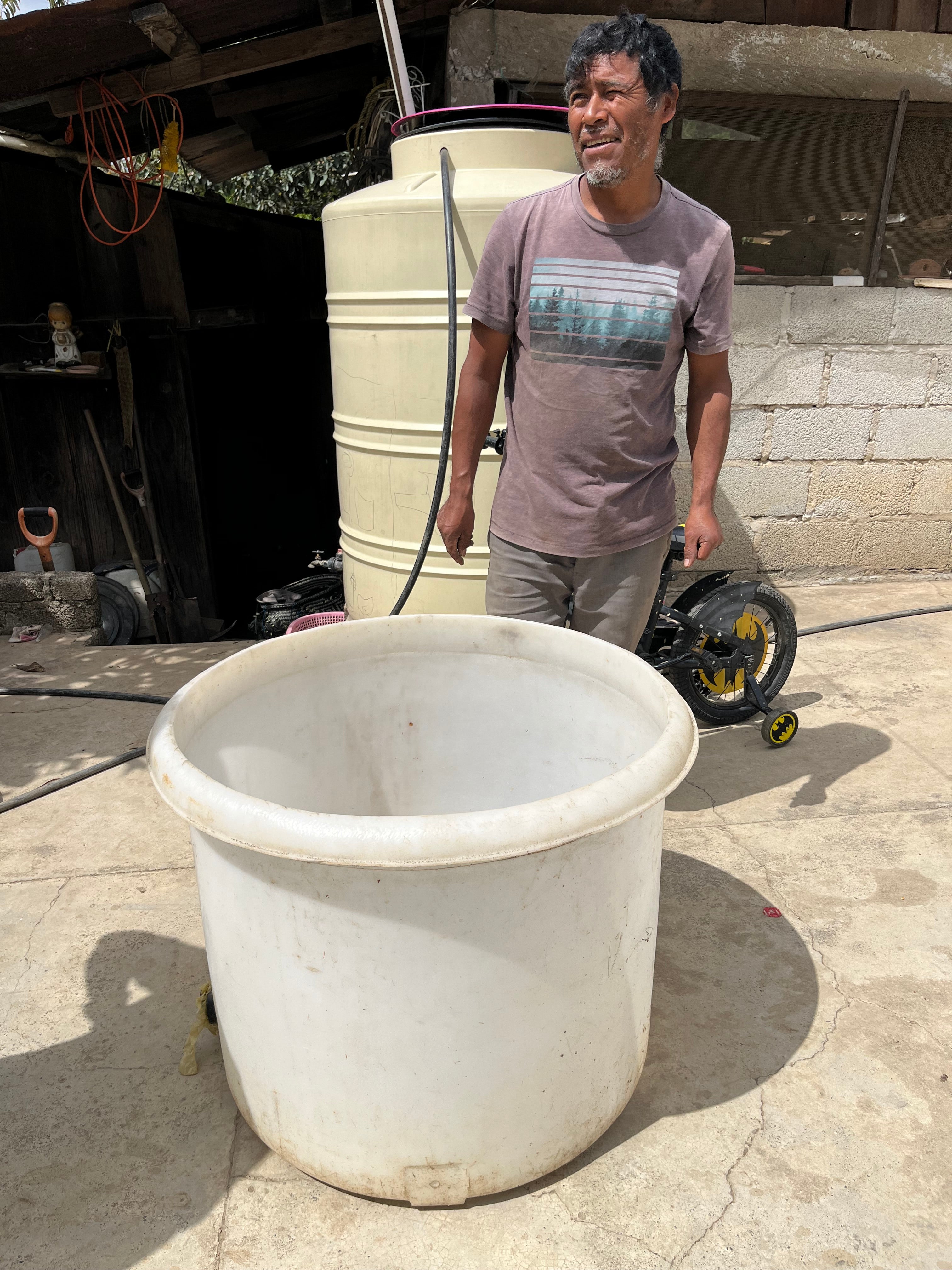
The cherries are allowed to ferment in these tubs for about 36 hours. Coffee fermentation is not like wine or bread. It is simply a process to rot the fruit without damaging the bean's flavors. Turbulent clean water will then remove all the clinging fruit. After, the beans will be put out on raised beds to dry for over a week.
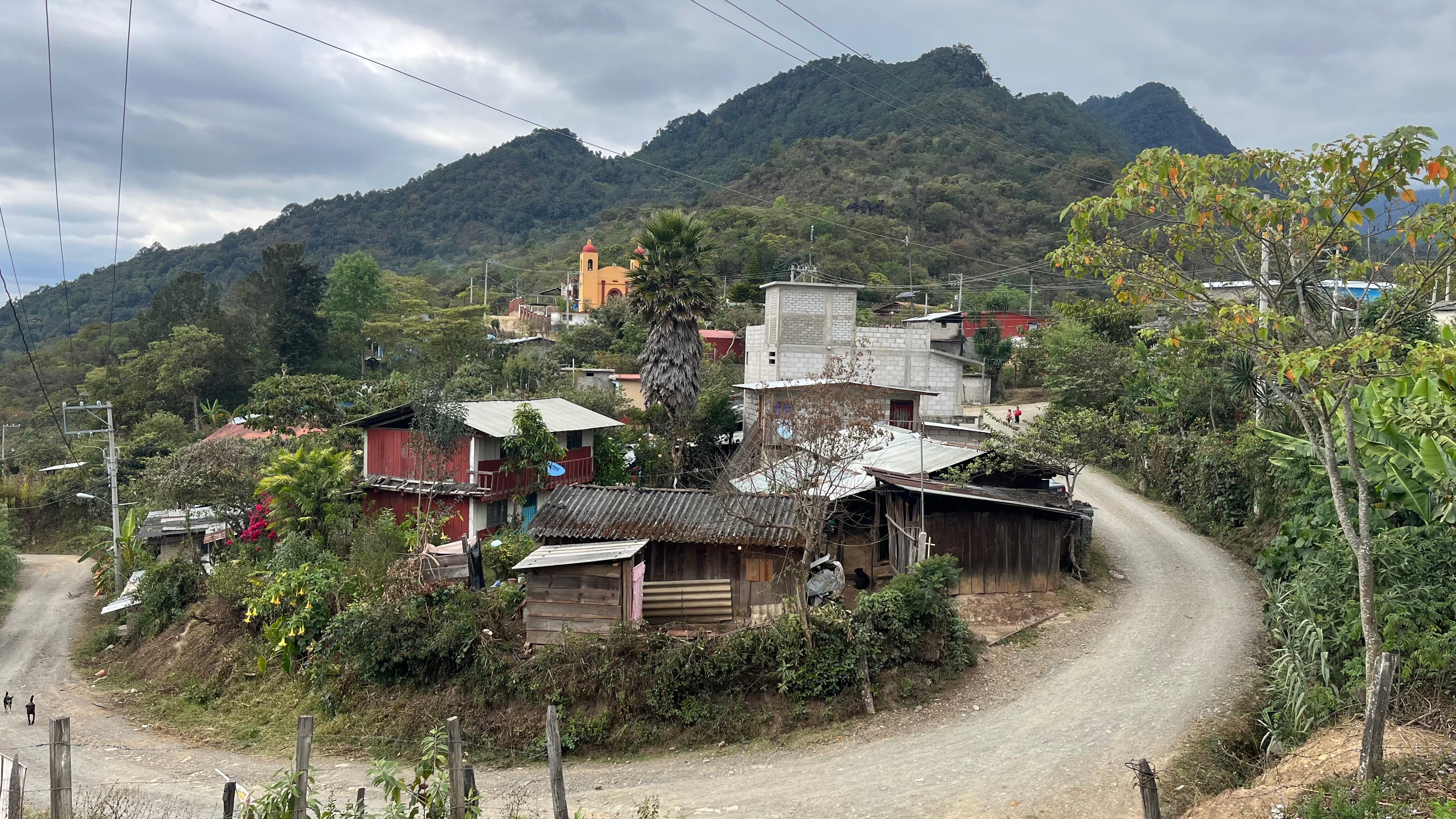
Back on the road to Guadalupe Miramar.
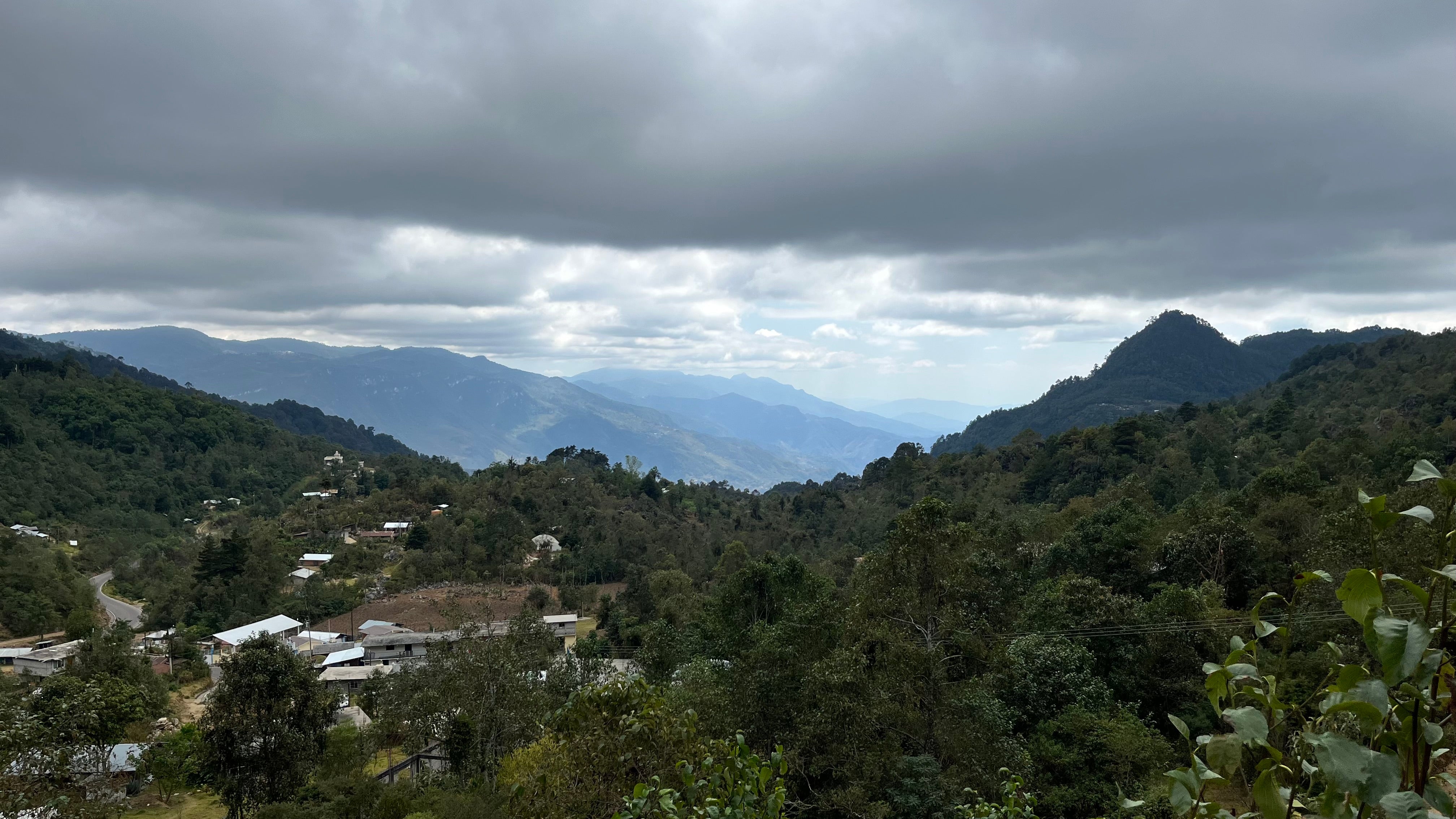
Entering the town of Guadalupe Miramar.
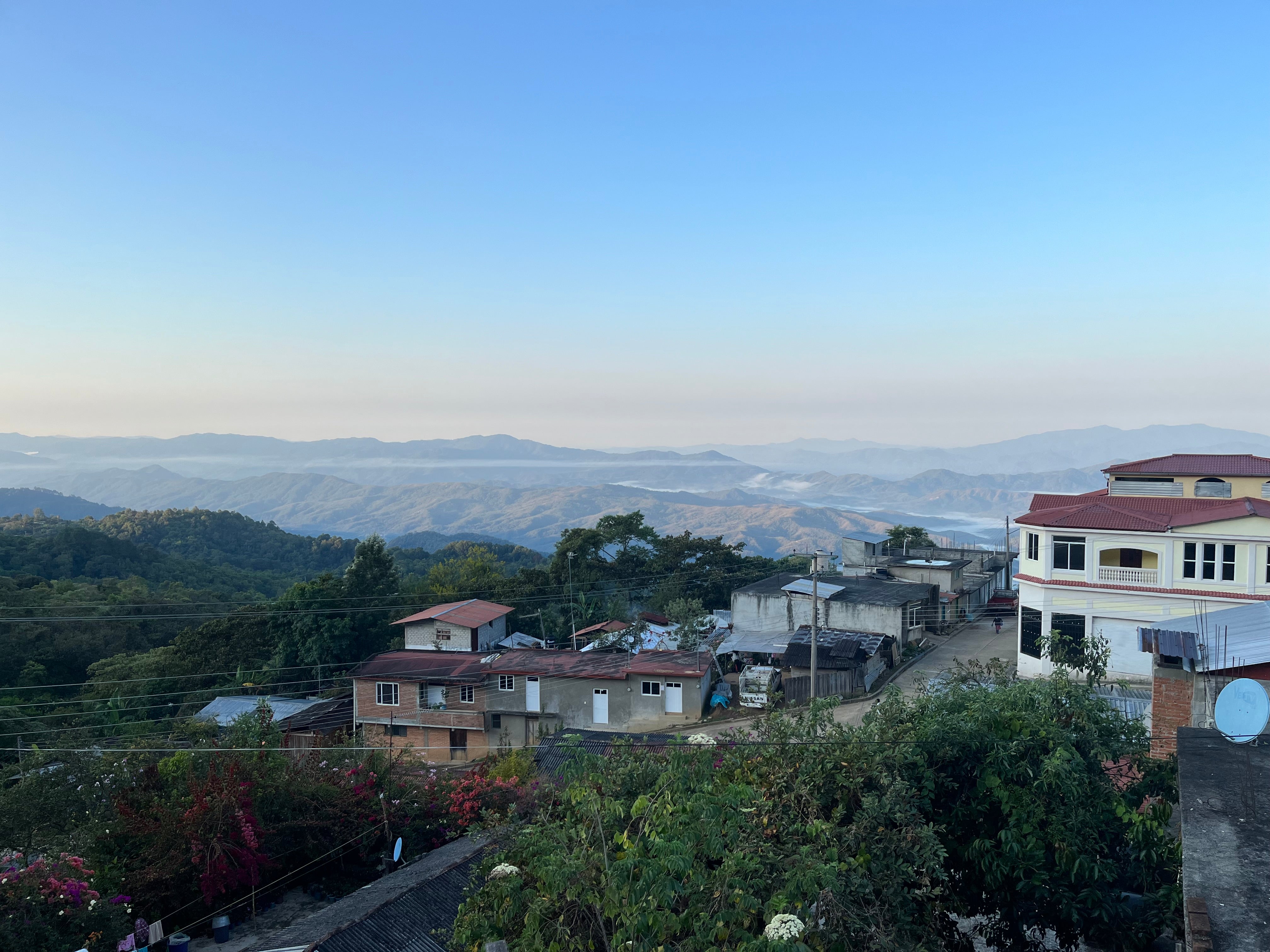
Looking towards the Pacific Ocean. The views here are breathtaking.
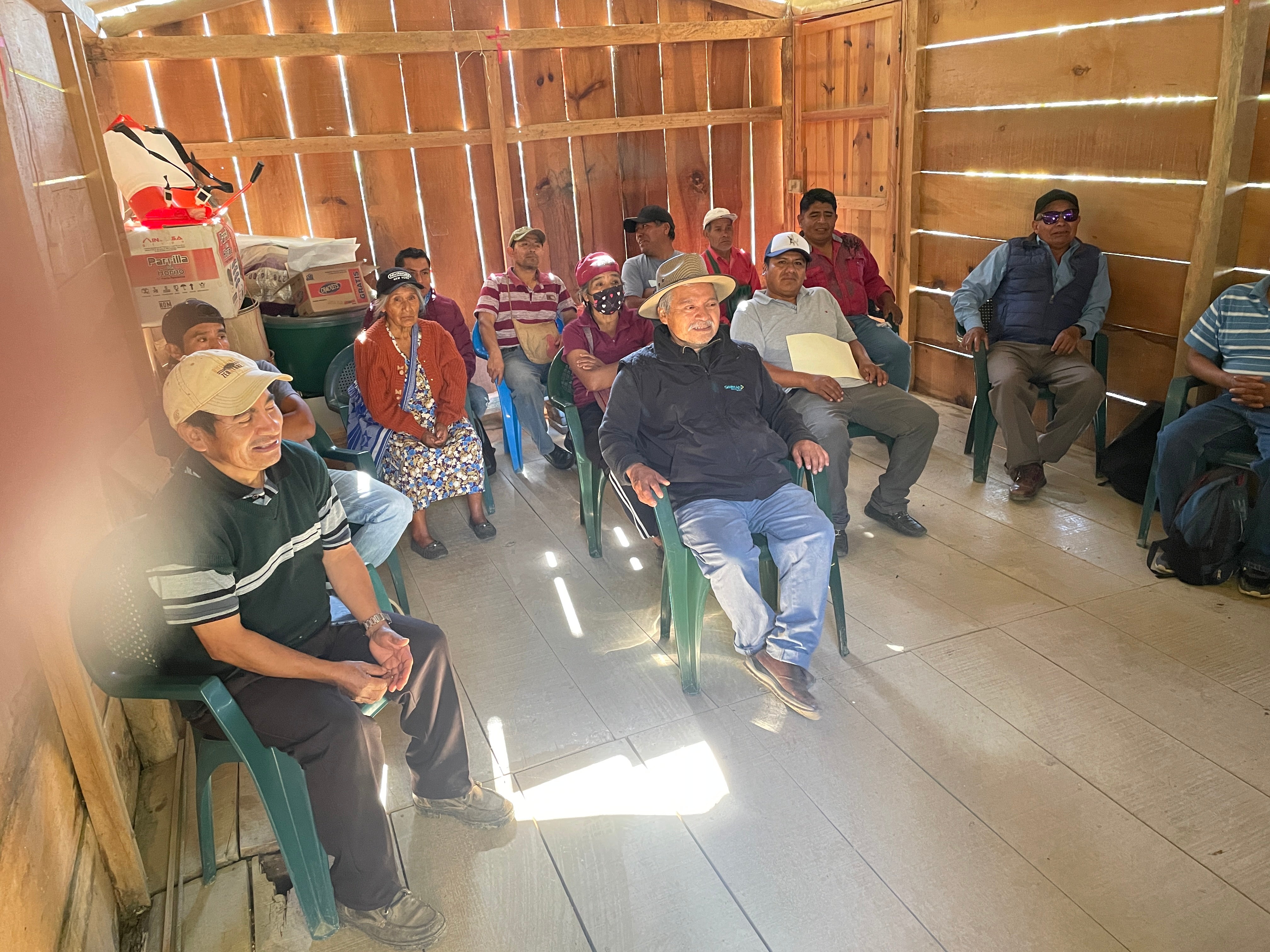
Miramar farmers gathered to speak with Red Fox.
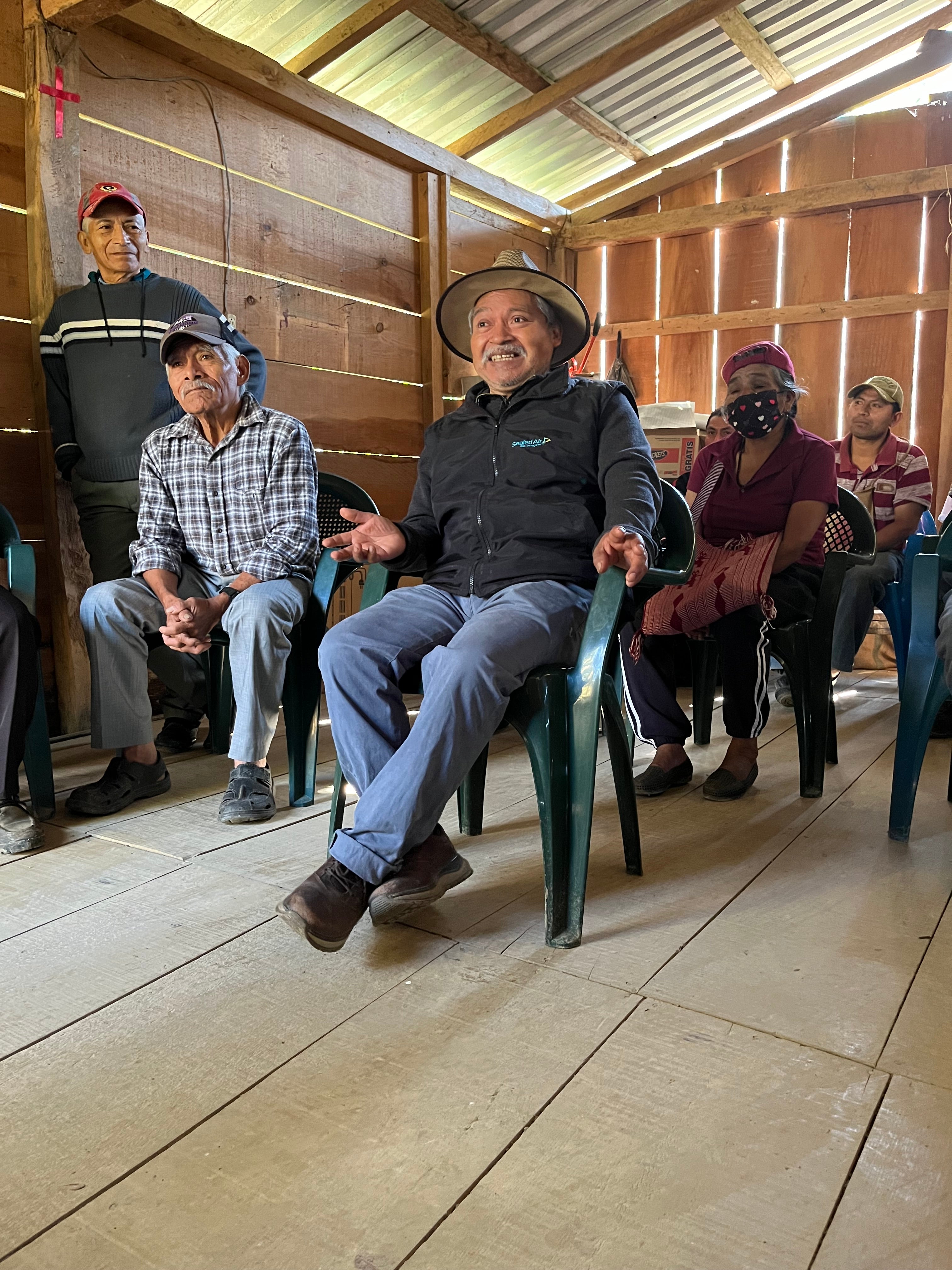
Roberto Perez Vasquez, one of several farmers, spoke to Red Fox. Issues were the same as at Yosotatu: a key concern is the rising costs of labor and other outputs.

Adam McClellan and the Red Fox team responded to farmers. They acknowledged the issues coffee farmers face and recommitted to support their efforts with pricing reflecting their quality. He then introduced Jenny and George as avid buyers of their coffee.
George then spoke briefly to thank them and emphasized that George Howell Coffee will never blend their coffee. It is always sold as Guadalupe Miramar, giving full credit to their efforts.

After the discussion we visited the coffee tree nursery. The netting overhead protects the seedlings from the full force of the sun.

Traditional coffee trees grow under tall trees, similar to Arabica’s original environment in Ethiopia. The productivity is low but the plants are healthy with almost no use of chemicals.
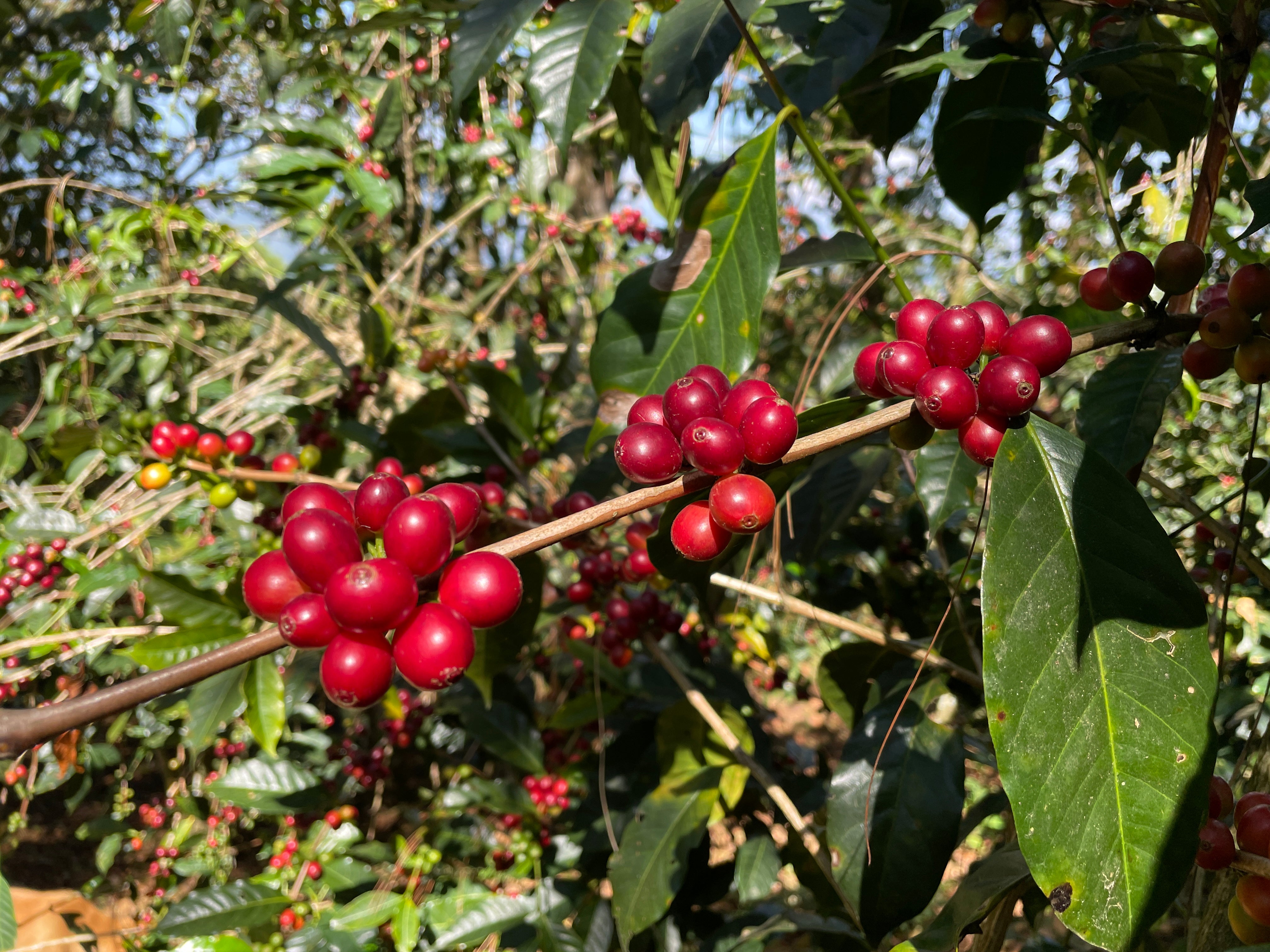
Perfectly ripe cherries. Not all branches are consistently red-ripe. Pickers need to exert great care in selecting uniformly ripe fruit.

One fruit = 2 beans.
Picking cherries.

Quality = Selective Picking!
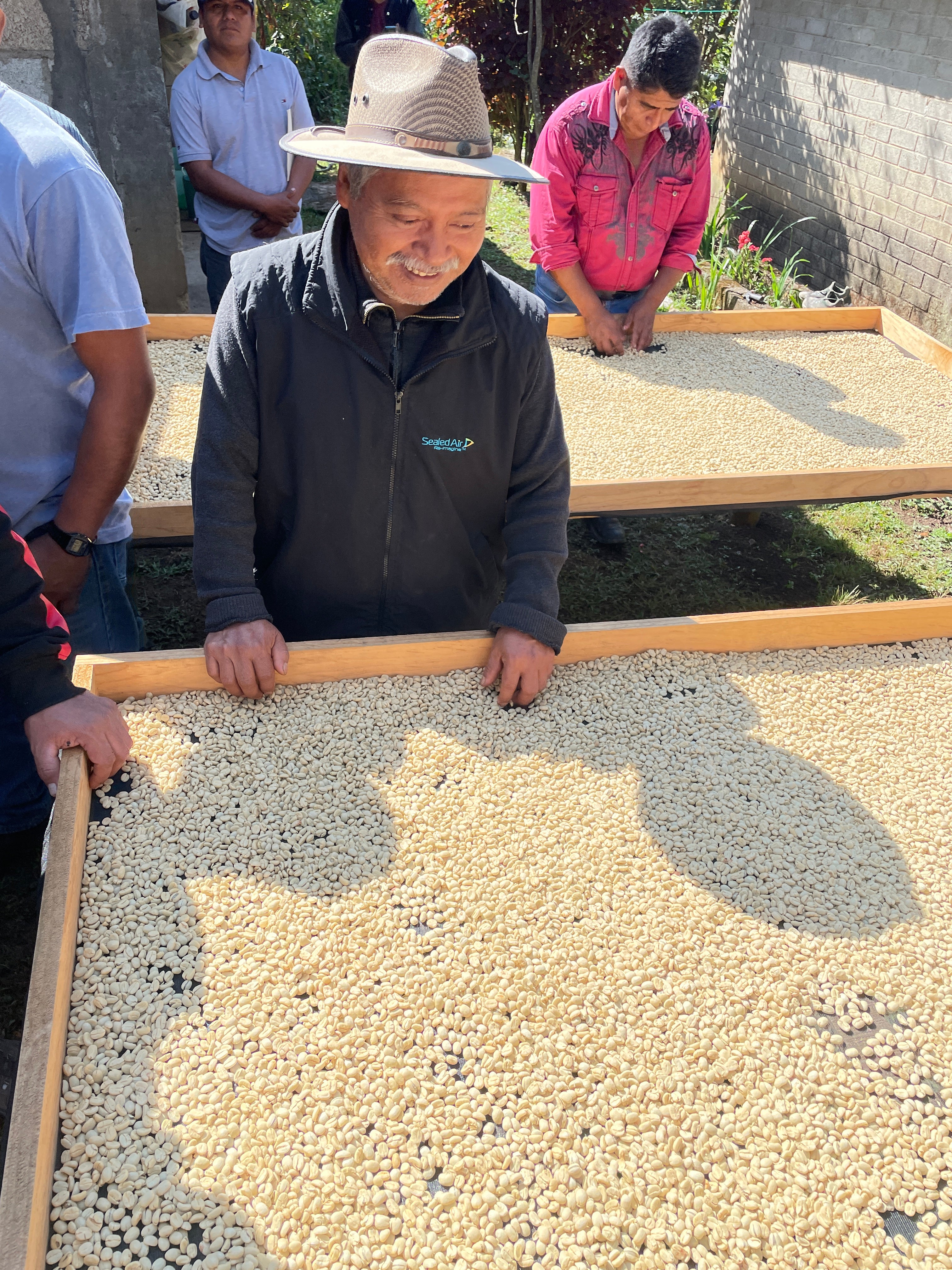
After depulping and fermenting, the “beans” still covered by outer
protective envelopes called parchment, dry for up to 20 days.
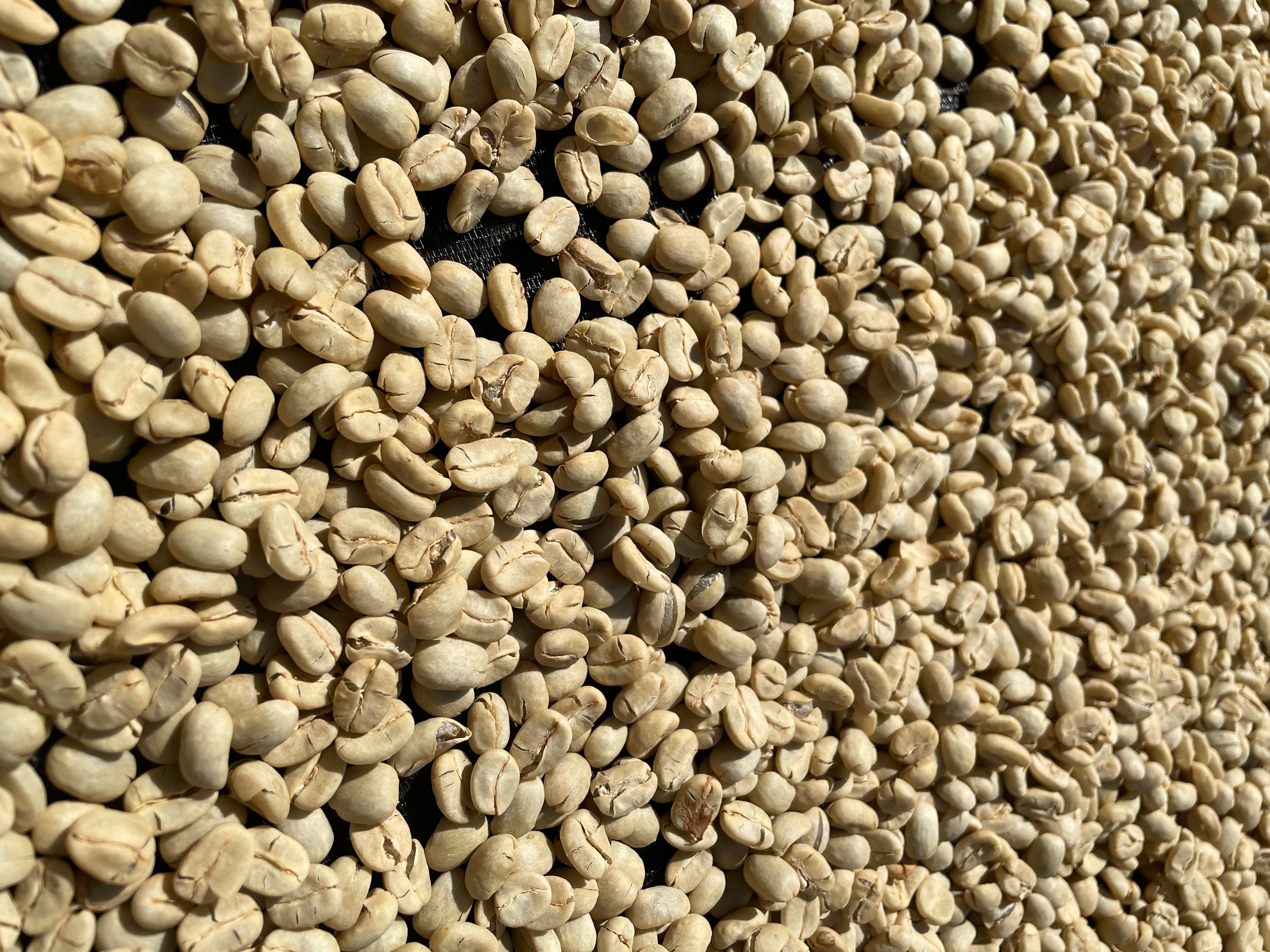
Drying parchment coffee. When moisture drops from about 60% to 10.5%, ideally, the coffee is ready for dry milling: sorting by size, density and defect. Only then is it ready to ship to us.

